Four
THE VISITOR
FOOD, LODGING, AND COMMERCE
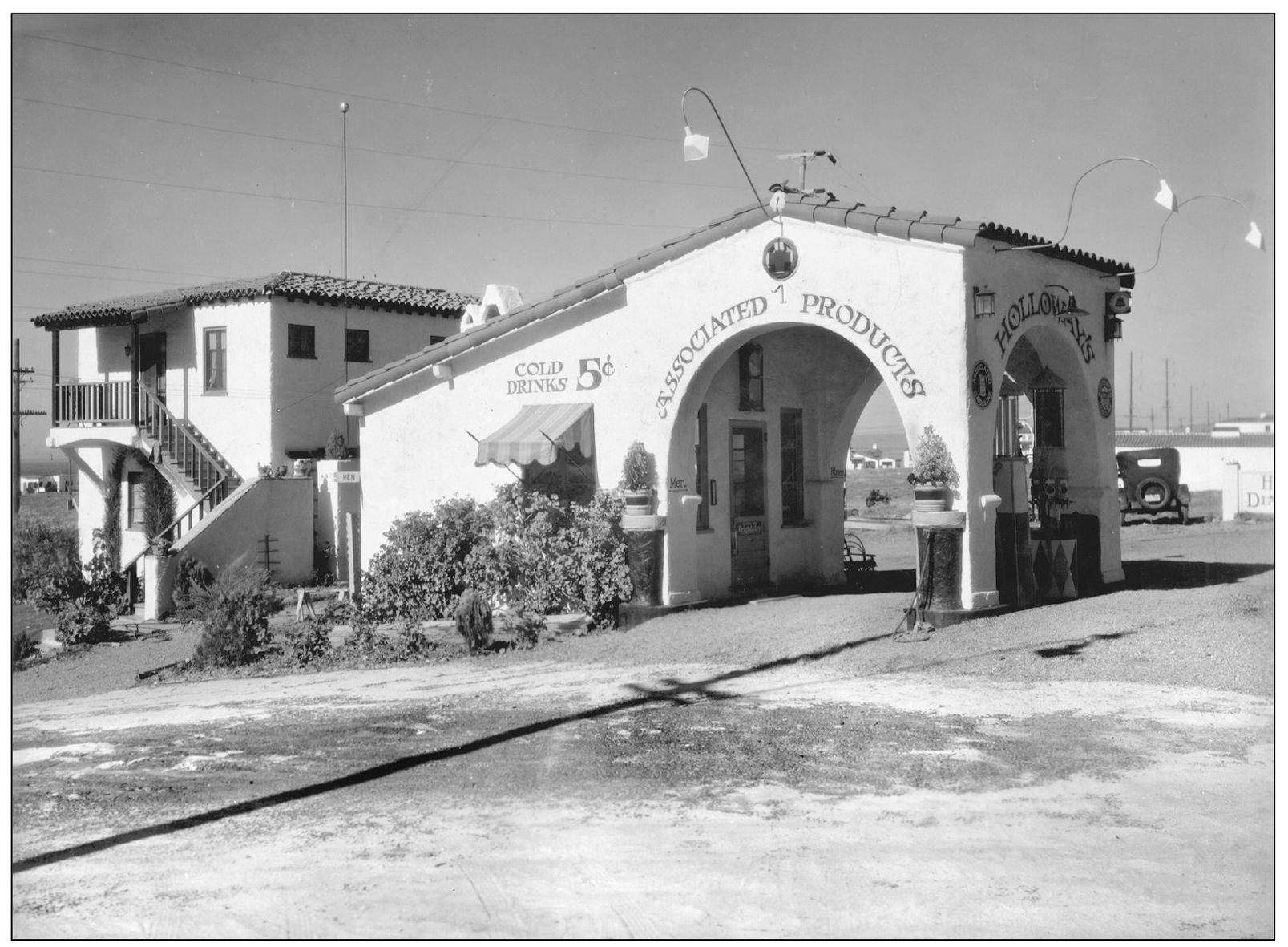
Holloway’s Associated Products was located on Algodon and El Camino Real, pictured here around 1929. Before the I-5 Freeway was constructed, motorists drove down Highway 101 from Los Angeles. The Associated Service Station was open all night and offered aviation ethyl and Goodrich tires.
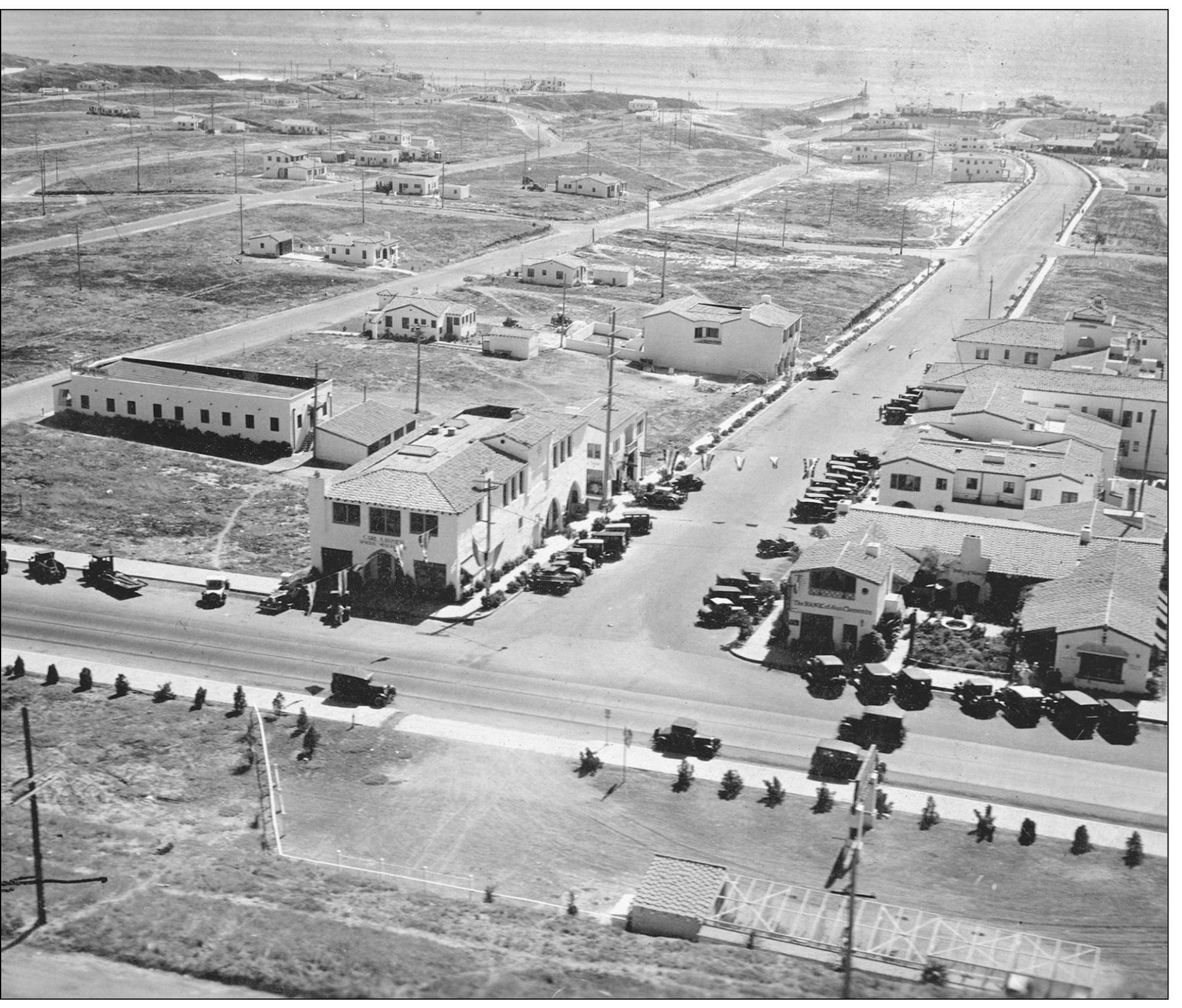
Visible from the corner of Del Mar and El Camino Real, the Administration Building was also known as Ole Hanson’s Office. The first gas station located on El Camino Real is also visible, as are the Hotel San Clemente, Taylor Building, Antoinette Apartments, The Clubhouse, Coe Building, the Bartlett Building, and the flat-roofed Prado building. (Courtesy of Liz Hanson Kuhns.)
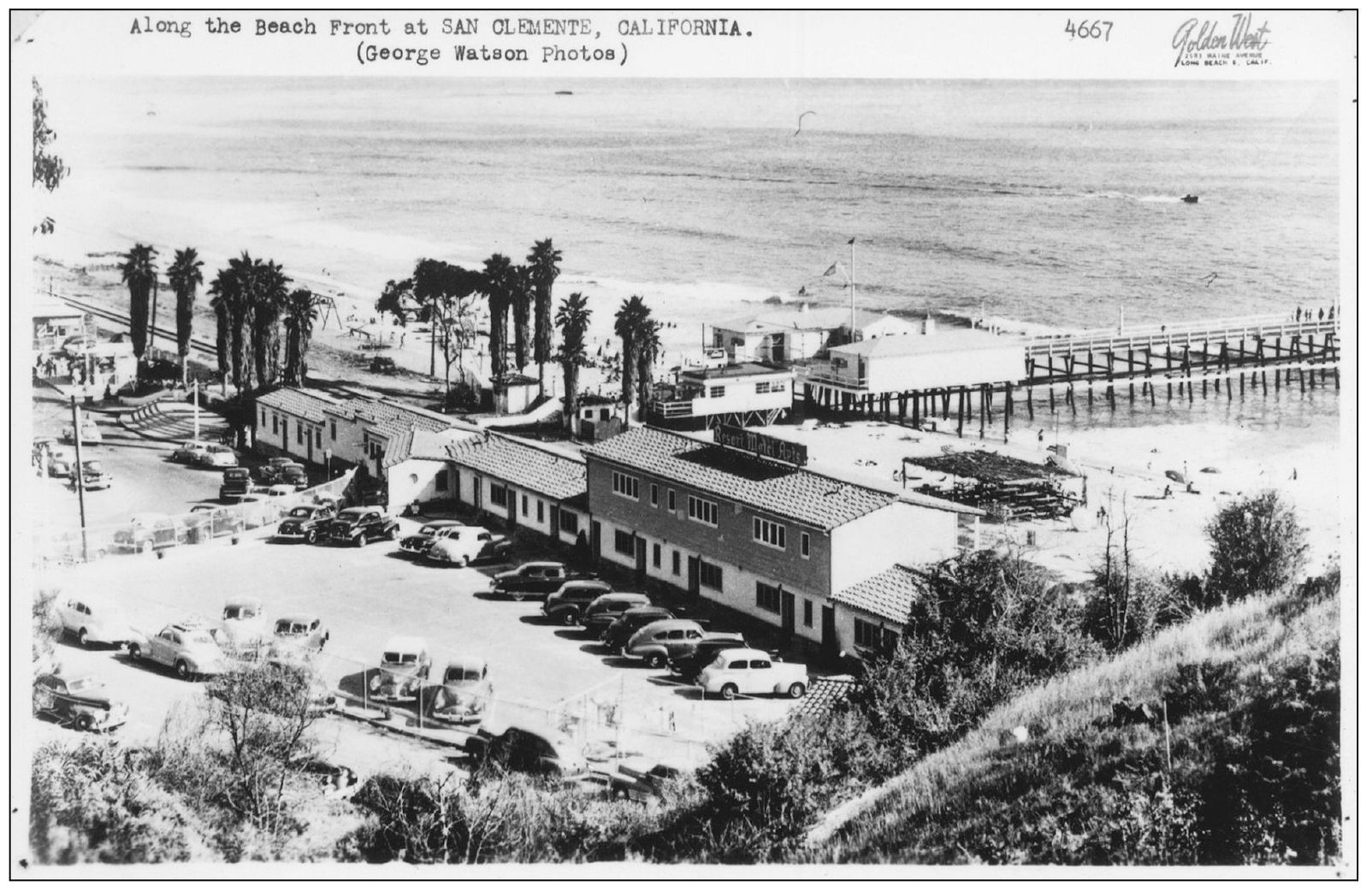
This is a view of the San Clemente Resort Motel and the bait and tackle shop around 1950. The motel resort was the perfect location for visitors to enjoy the Pier Bowl. In the 1970s, the city performed a controlled burn of the motel and area to build the Parque Del Mar.
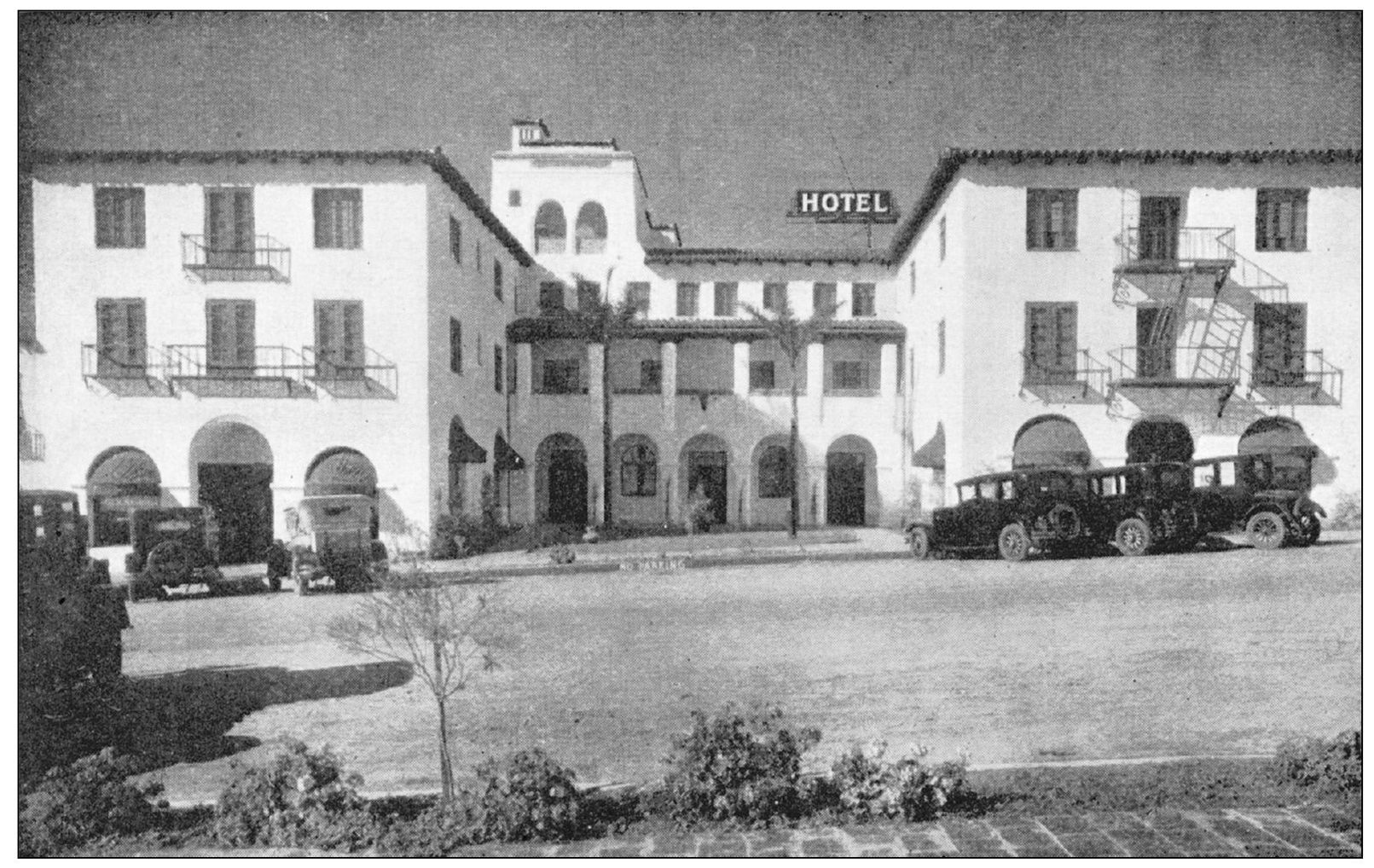
The San Clemente Hotel was one of the early buildings on Avenida Del Mar. James E. Lynch was its first owner. Many have stayed in the hotel, either while visiting San Clemente or just on their way between San Diego and Los Angeles. Stars from 1920s and 1930s Hollywood and other socialites vacationed here.

In the 1940s and 1950s, a neon sign was added to the hotel. Residents remember that it never seemed to have all the letters lit at the same time. The running joke was, “What is the hotel’s name today?” Today the building is on the National Register of Historic Places. To the right is the Taylor Building. (Courtesy of Lois Divel.)
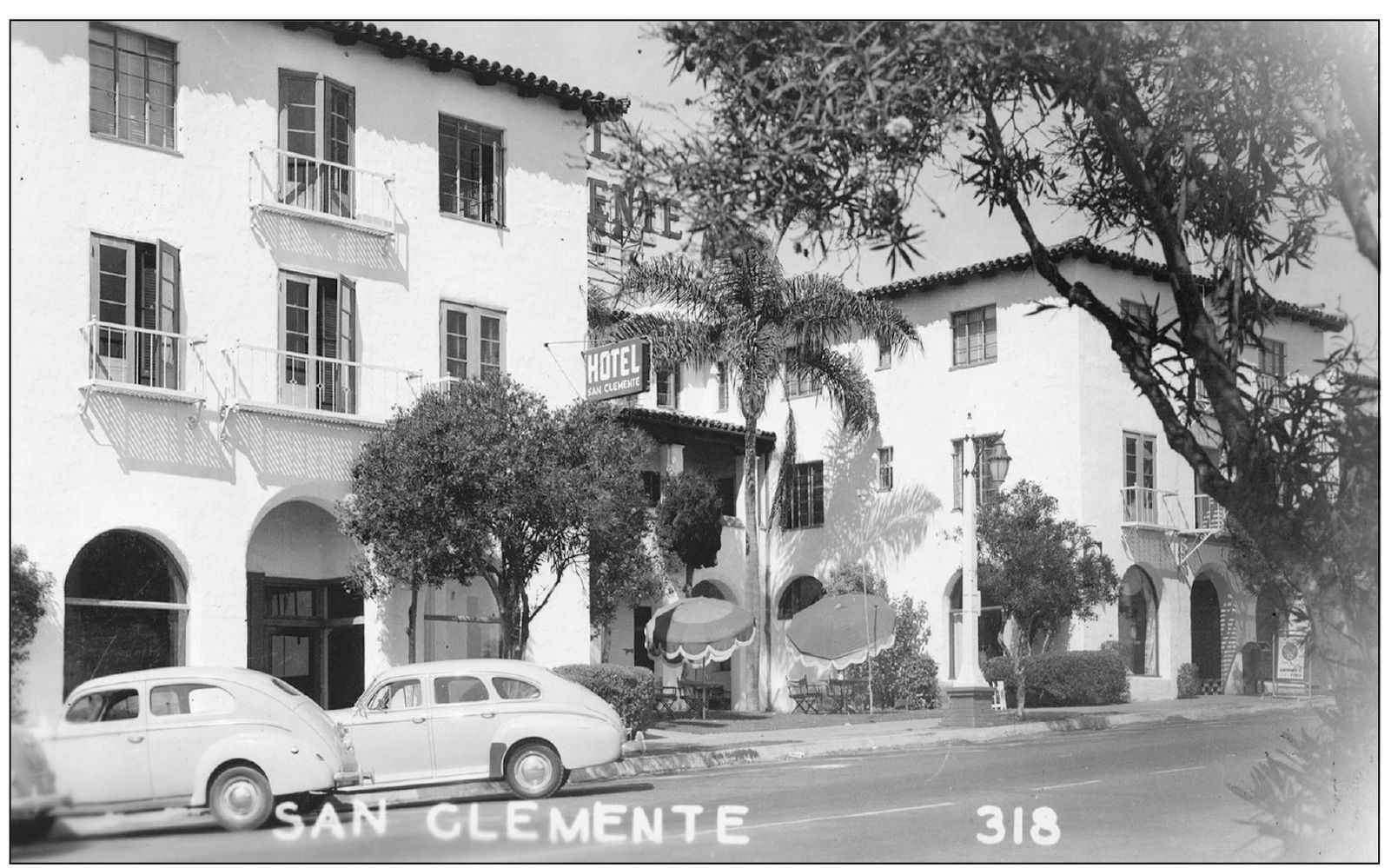
Originally the San Clemente Hotel had 60 rooms and baths. In 1976, the original 1927 configuration was changed and converted into 47 apartments. The central tower contains a carillon that is programmed to chime tunes daily.

The interior of the San Clemente Hotel in 1927 was decorated with revival furniture and palms, appealing to the class of clientele expected to stay in the hotel. The staircase here in the center leads to the next level of rooms, and the door on the right is the elevator. Every room had electricity, and the charge per room was $2 a night and up.
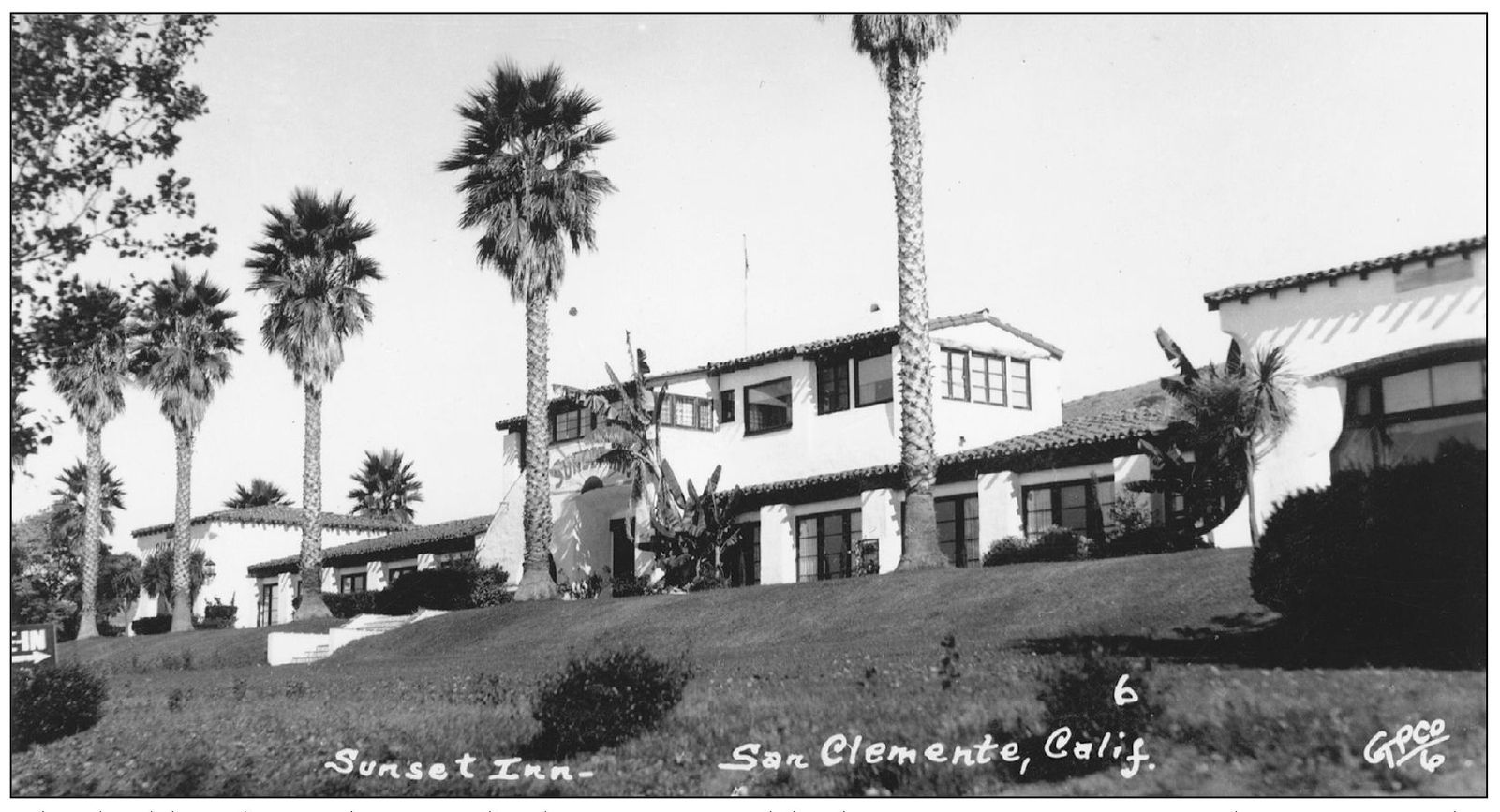
This building located at South El Camino Real had more transformations than most of the original buildings in San Clemente. First, as the San Clemente Riding Academy, the ornate and expansive building was a luxurious stable for some of the finest horses. After serving as the stables and the academy, the building was transformed into the San Clemente Hospital and was considered a “fancy home for sick people.” Later it became a series of motels before its demolition in the 1970s.
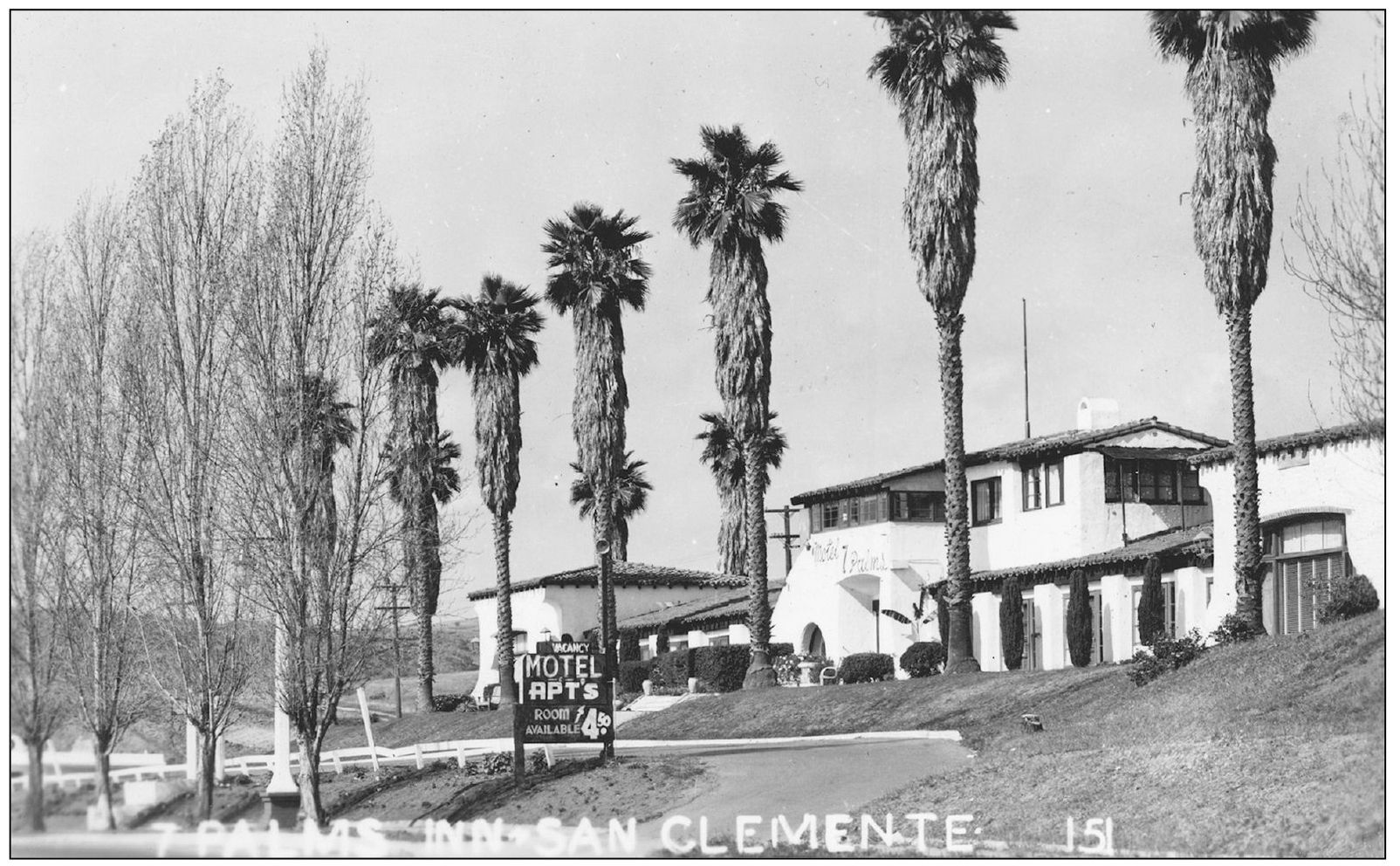
The 7 Palms Inn and Apartments, previously the Sunset Inn, was the final transformation of the building on South El Camino Real. From horse stalls to hospital beds to the Sunset Inn and the 7 Palms Motel, this building was versatile and beautiful. (Courtesy of Lois Divel.)
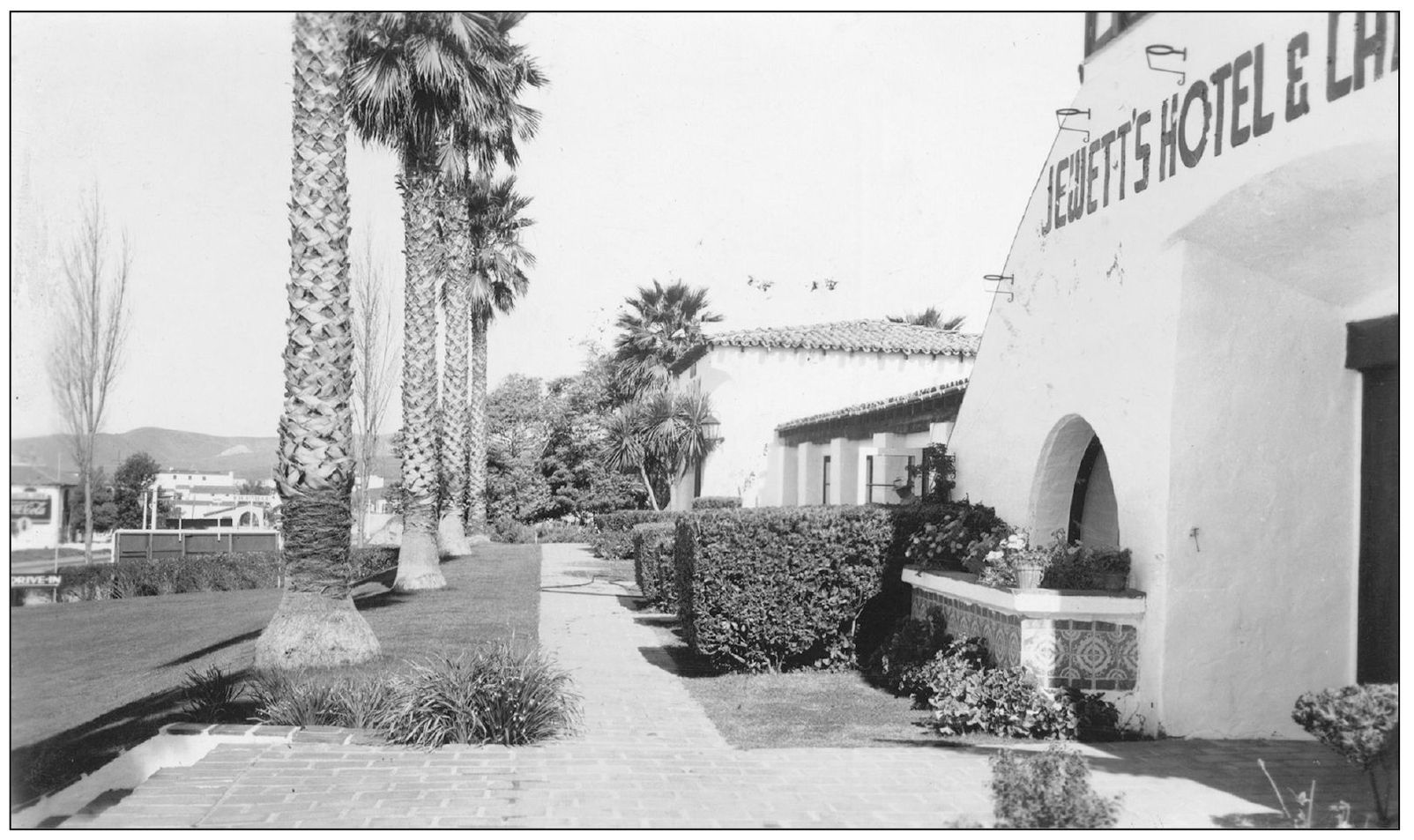
In another transformation, the San Clemente Riding Academy also served as the Jewett’s Hotel and Café for a short time before it was demolished. (Courtesy of Lois Divel.)

Visitors have always been a big part of San Clemente, and the town offers much hospitality. The Travel Inn became an important addition to the town’s other hotels and motels, especially during the summer months.
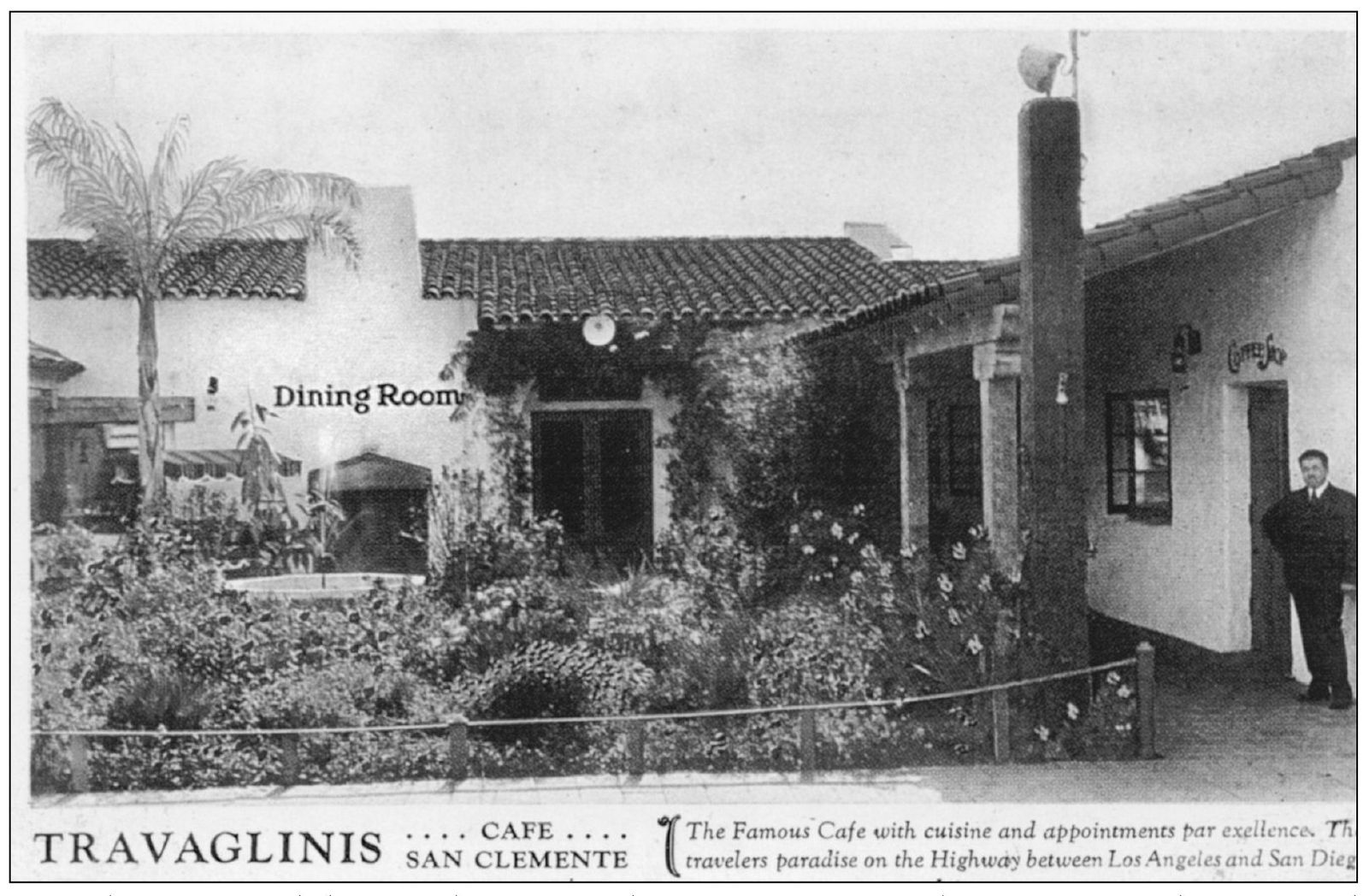
Travaglinis occupied the same location as the first café in San Clemente, across the courtyard from Ole Hanson’s Office. It later became the Travel Inn and then, once again, a restaurant. (Courtesy of Lois Divel.)
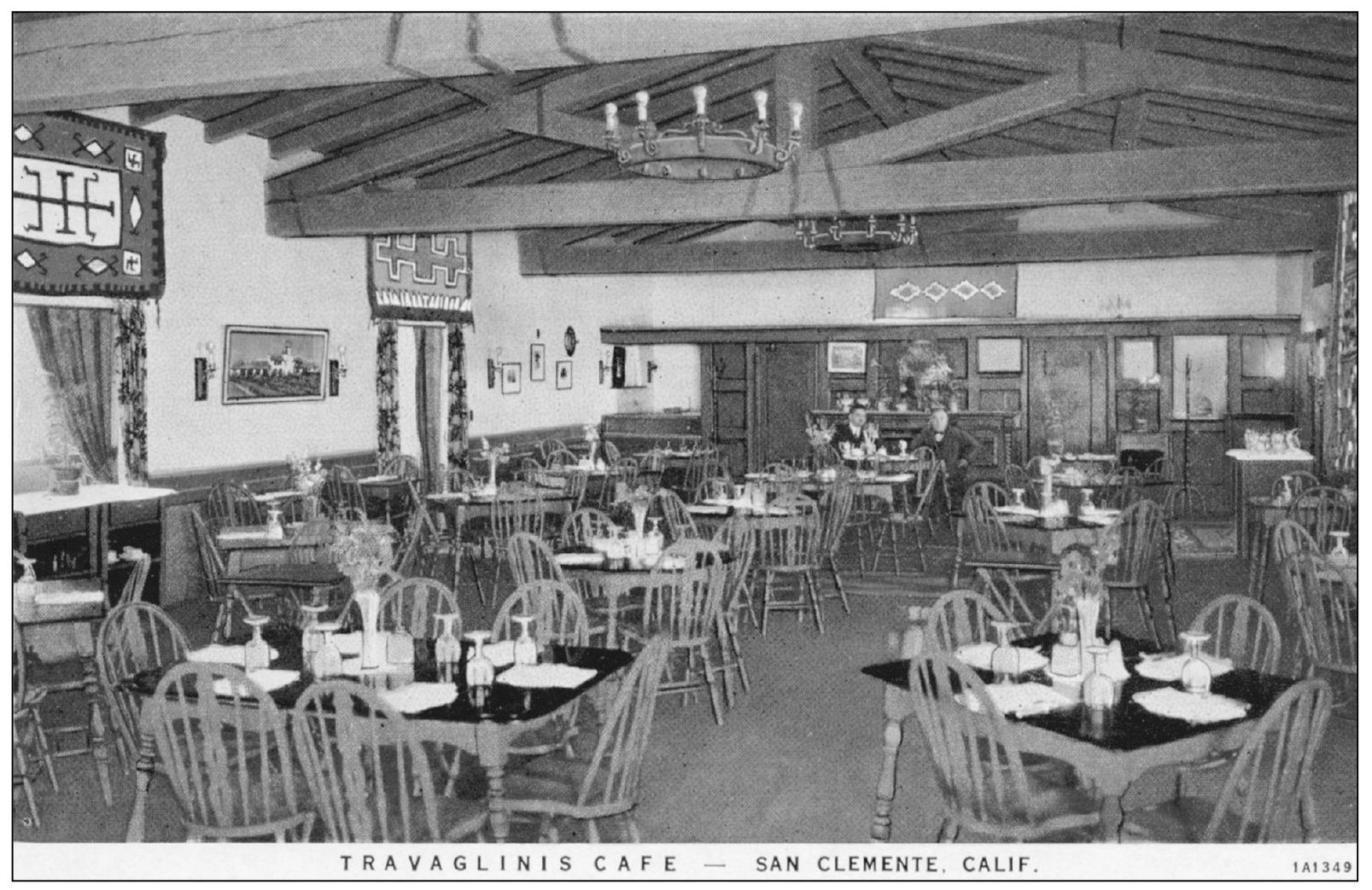
Pictured above is the interior of Travaglinis restaurant, known for its French and Italian cuisine. The ceiling beams were original to the San Clemente Café. The location of the restaurant, next to the service station on the corner of Avenida Cabrillo and North El Camino Real, provided visitors the chance to fuel the car, have dinner at Travaglini’s Restaurant, and maybe even stay overnight at the San Clemente Hotel. (Courtesy of Lois Divel.)
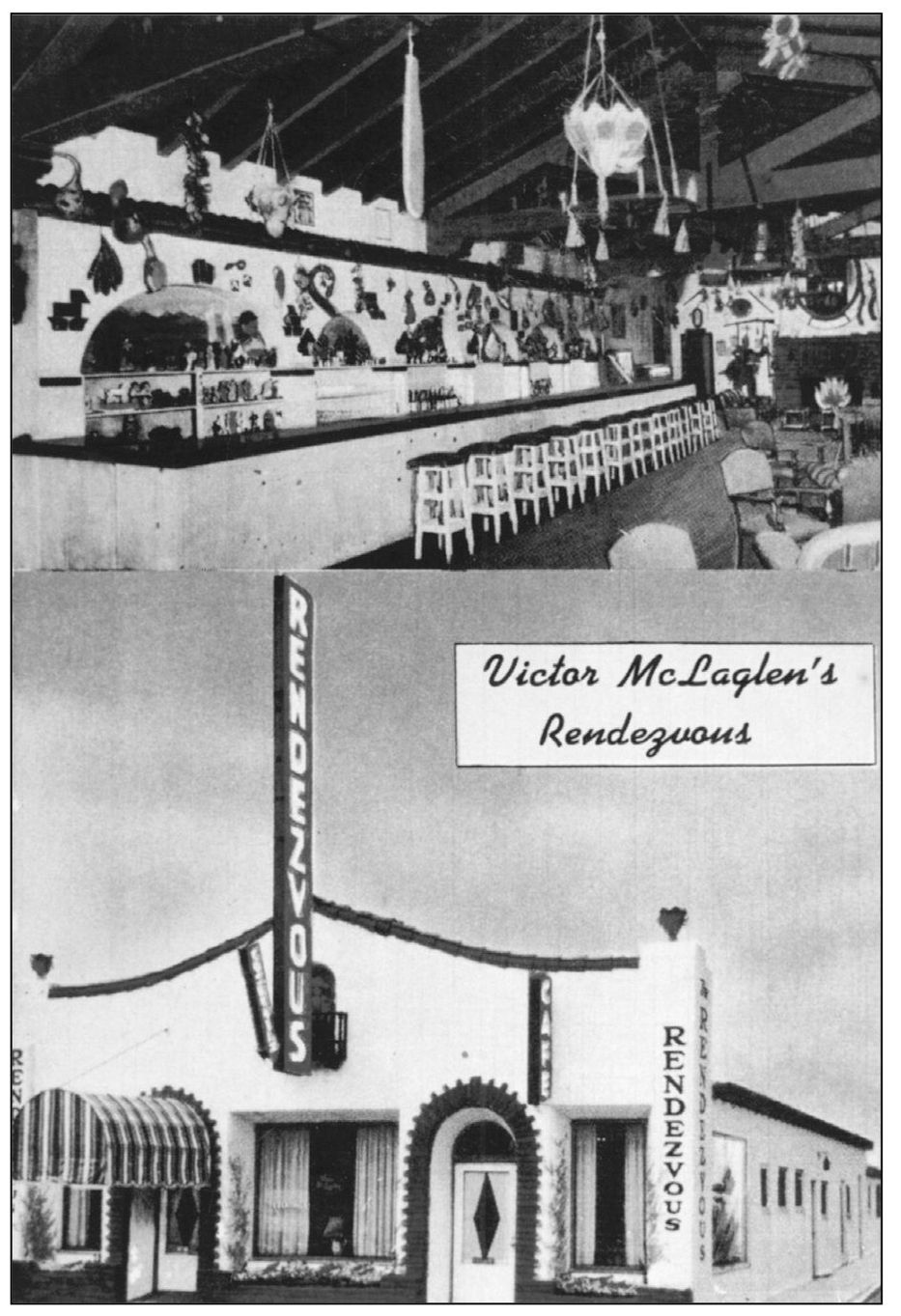
Victor McLaglen’s The Rendezvous Restaurant, named after the British actor, is pictured here. Of the roughly 500 buildings constructed under Ole Hanson, more than 200 survive today, making San Clemente a heritage tourism destination.
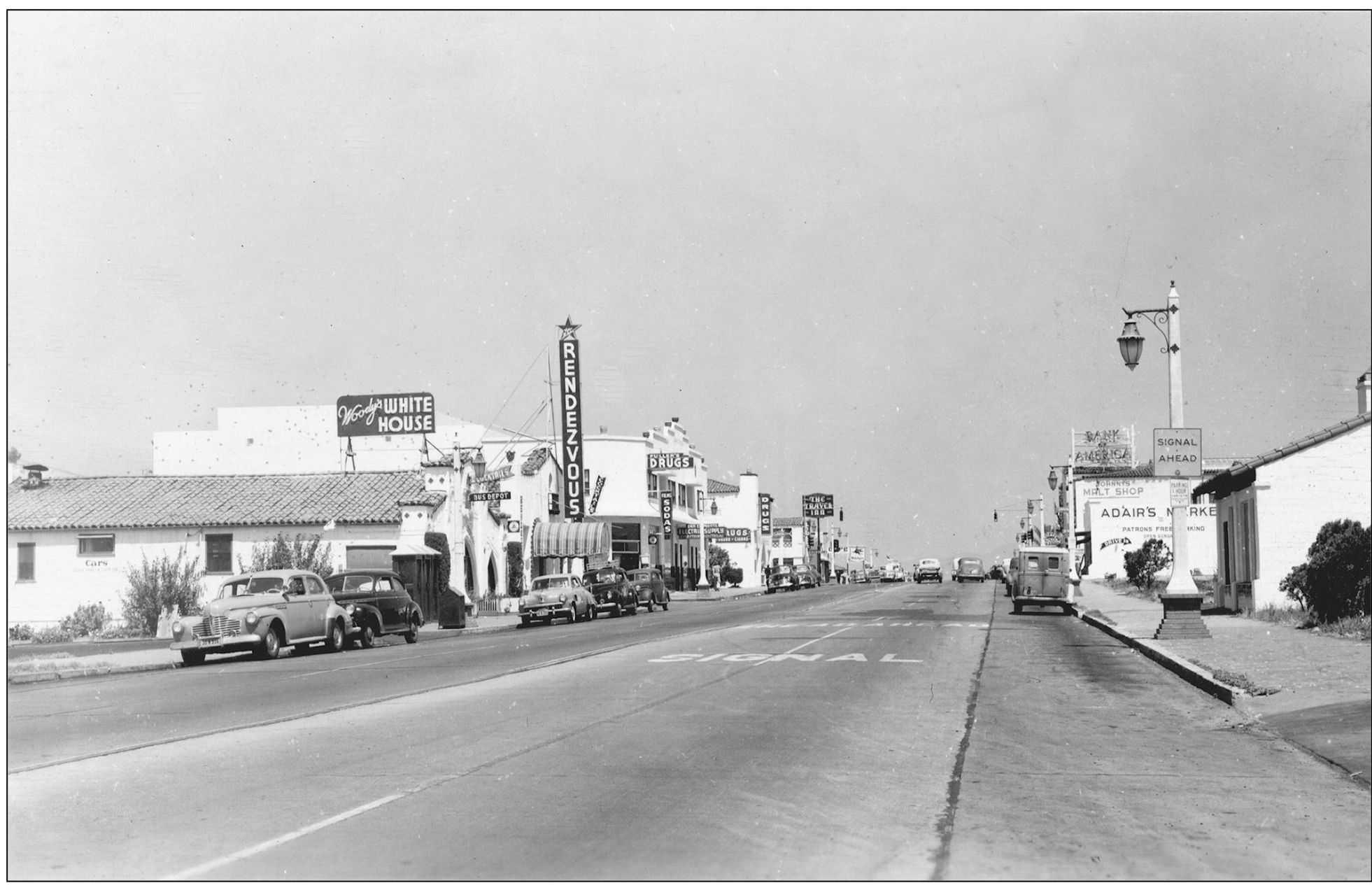
Pictured at left is Victor McLaglen’s The Rendezvous Restaurant as seen from El Camino Real. When San Clemente was founded in 1926, the Prohibition era was already a reality. San Clemente immediately earned a reputation for illegal alcohol distribution due to its relatively isolated location along the Pacific coast. Large foreign vessels remained anchored just offshore in international waters. Local fishermen with fast boats were recruited as rumrunners to transport liquor from ship to shore, often at night.
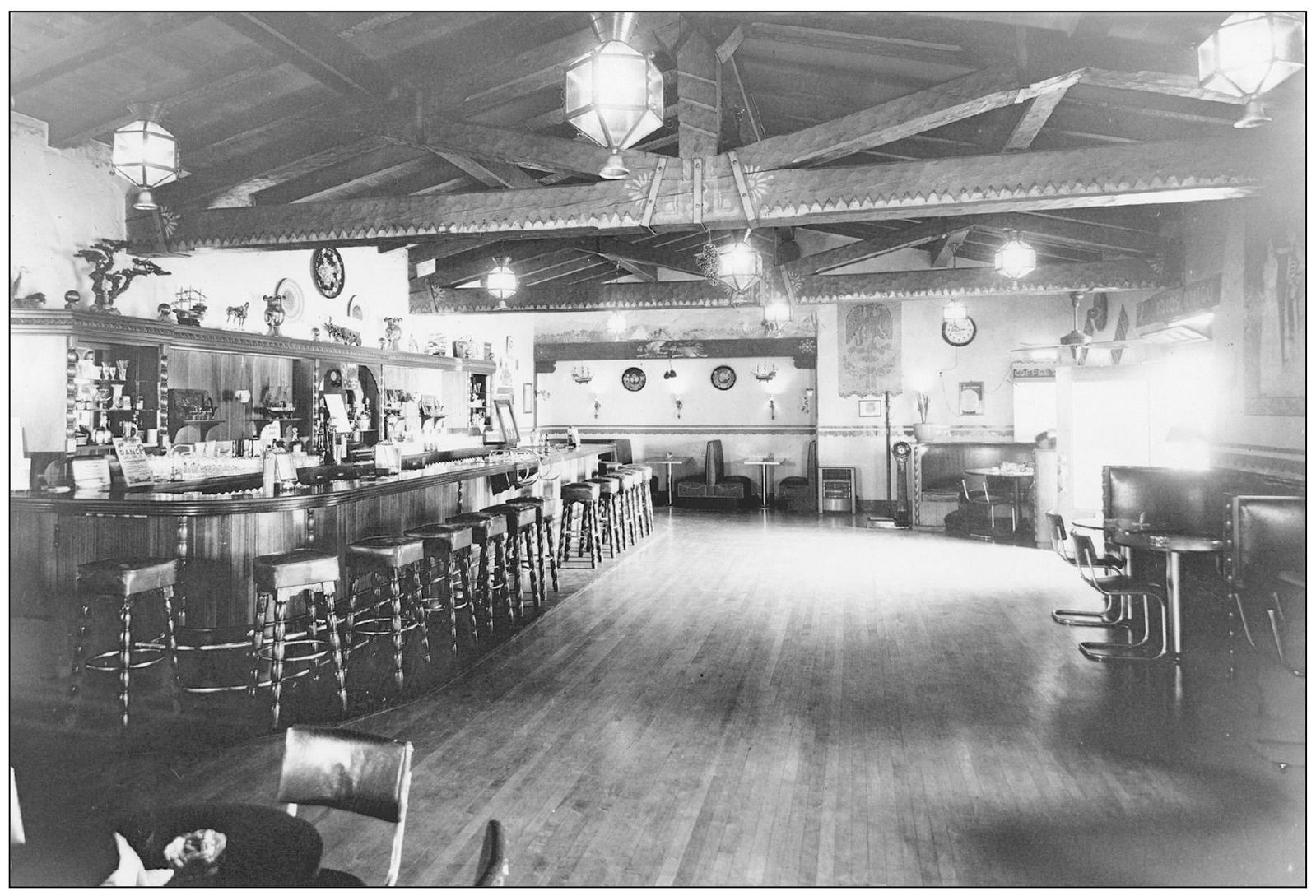
This shows the interior of The Rendezvous Restaurant. During Prohibition, San Clemente’s homes’ and restaurants’ liquor cabinets were considered among the best-stocked in Southern California. Overindulgence sometimes led to arrests of entire caravans of out-of-town guests by the local police. Often the offenders were put up in local hotels.
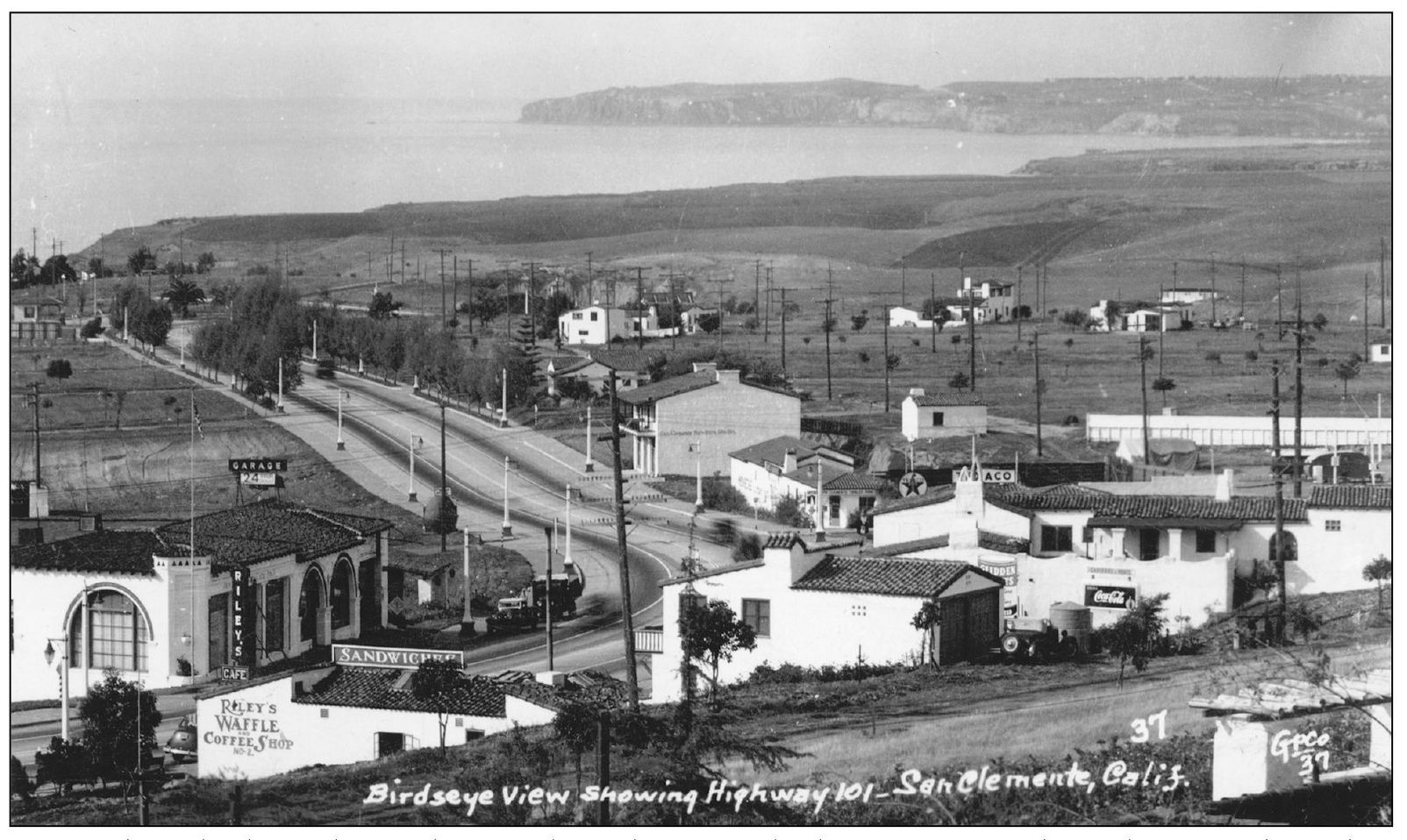
Pictured on the lower left is the popular Riley’s Waffle shop. In 1937, John Riley owned another waffle shop in Laguna Beach. Lloyd Hanson remembers when asking “What’s your secret?” Johnny would smile and say, “I’ve made the waffles the same for 20 years.” Across the street is the garage that became the 401 El Camino Real City Hall from 1930 to 1960.
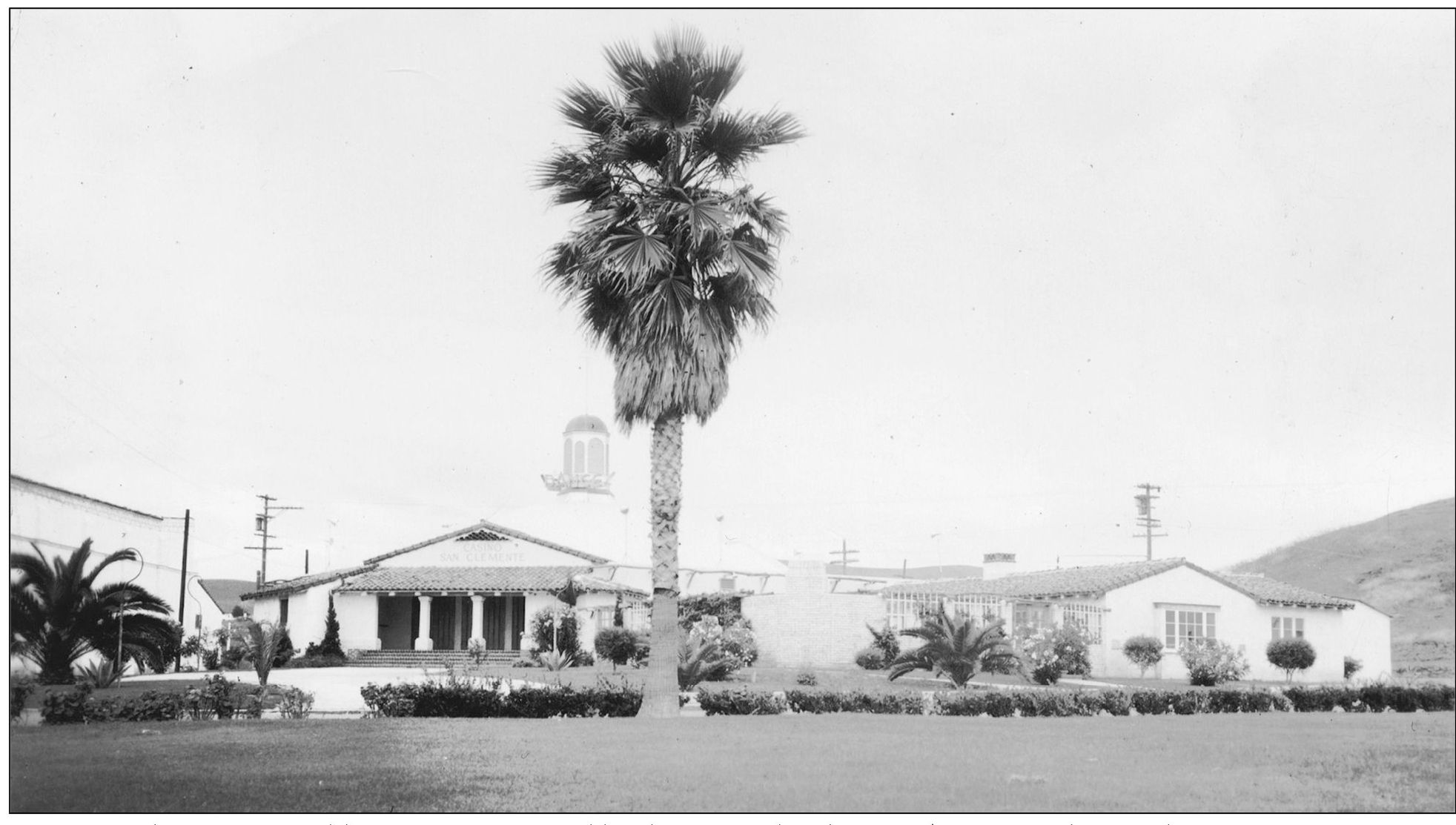
The Casino Building was constructed by the Strang brothers for $75,000 and opened in 1937. It featured dance bands and notable singers. Live radio broadcasts emanated from the West Coast’s newest hot spot six nights a week, and the original cost of admission was 40¢. Many Hollywood celebrities visited the night club, including Judy Garland, who was enticed to sing one of her hits, “I Cried For You.” Overlooking the beach, it had a nautical theme, air-conditioning, and the latest amplification system. The casino would become Sebastian’s West Dinner Theater after World War II.
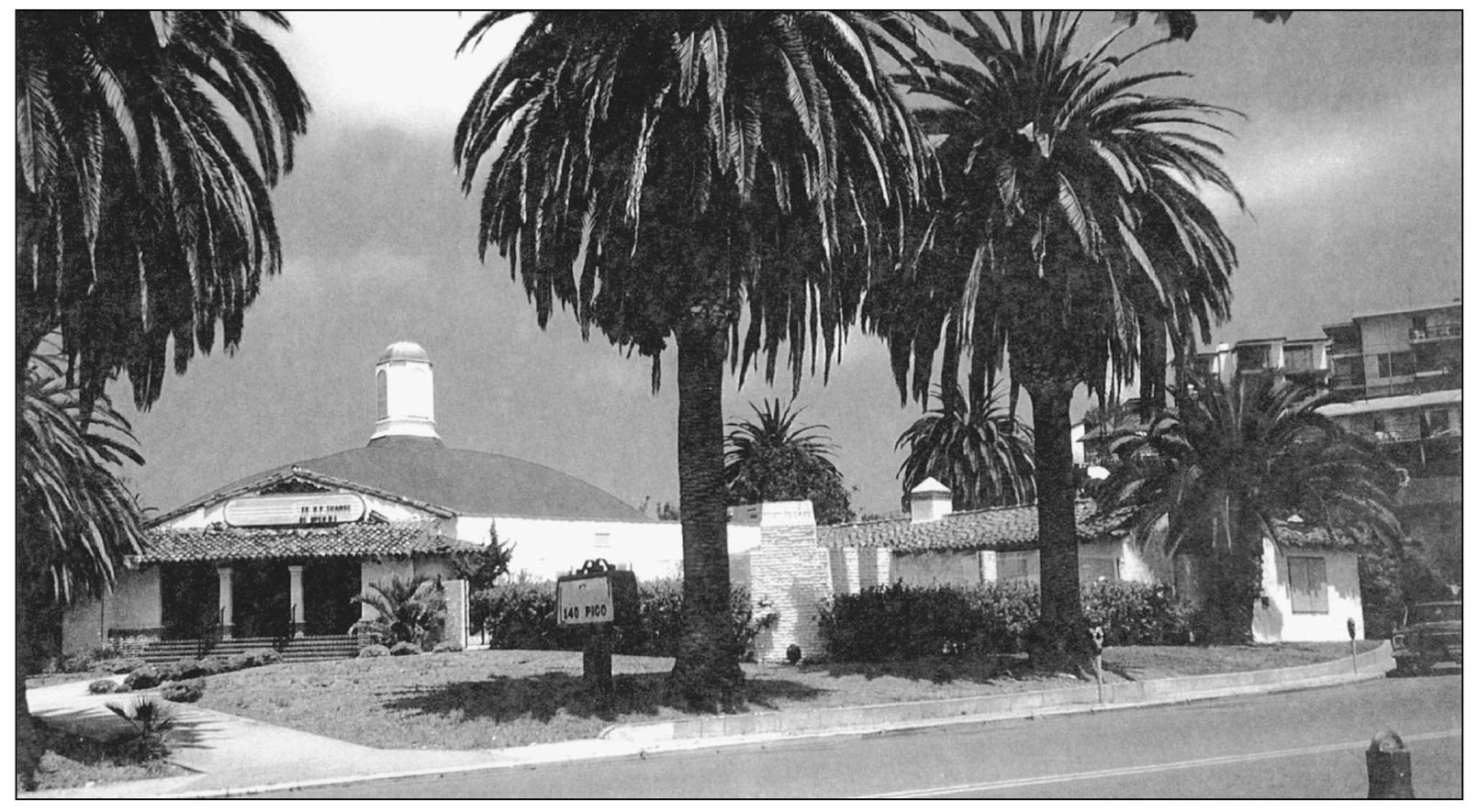
The Casino Building opened with a full cocktail bar and a circular floating cork dance floor, with changing lights, air-conditioning, and a “Patio of the Stars.” A crowd of 5,000 dancers were on hand at the July 31, 1937, gala premiere of the “Pacific Coast’s most beautiful dancing palace.” Opening night featured Sterling Young and his famous Columbia Network Orchestra. Over the years, the building has been reconfigured as a U.S. Coast Guard station, Moose lodge, the Southampton Dinner Theater, Sebastian’s West Dinner Theater, and the CHI Institute.
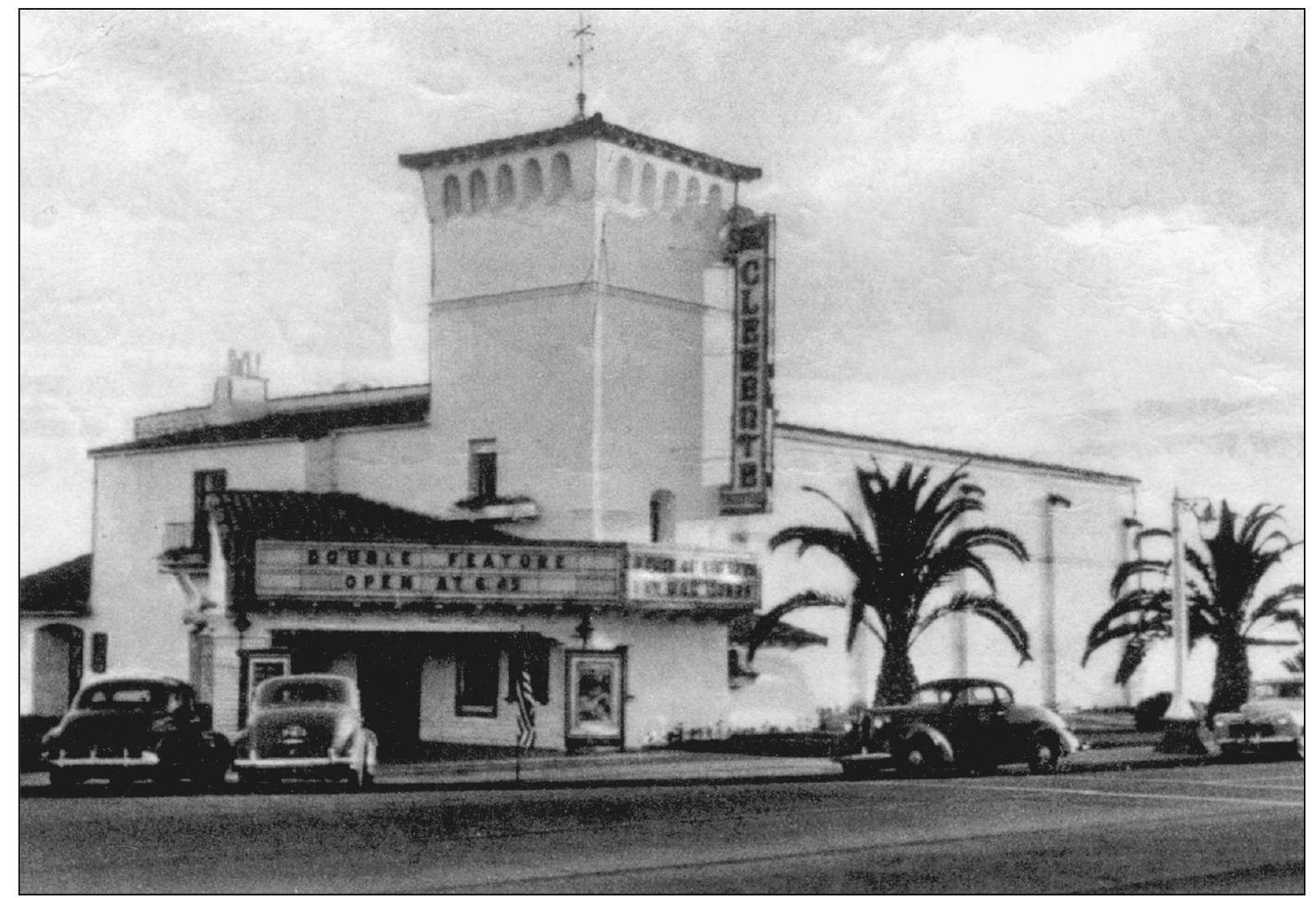
The San Clemente Theater would later be known as the Miramar Theater. Designed by architect C. A. Balch, it incorporated the Spanish tile and stucco of Hanson’s dream. The theater’s interior was comfortable and elegant.
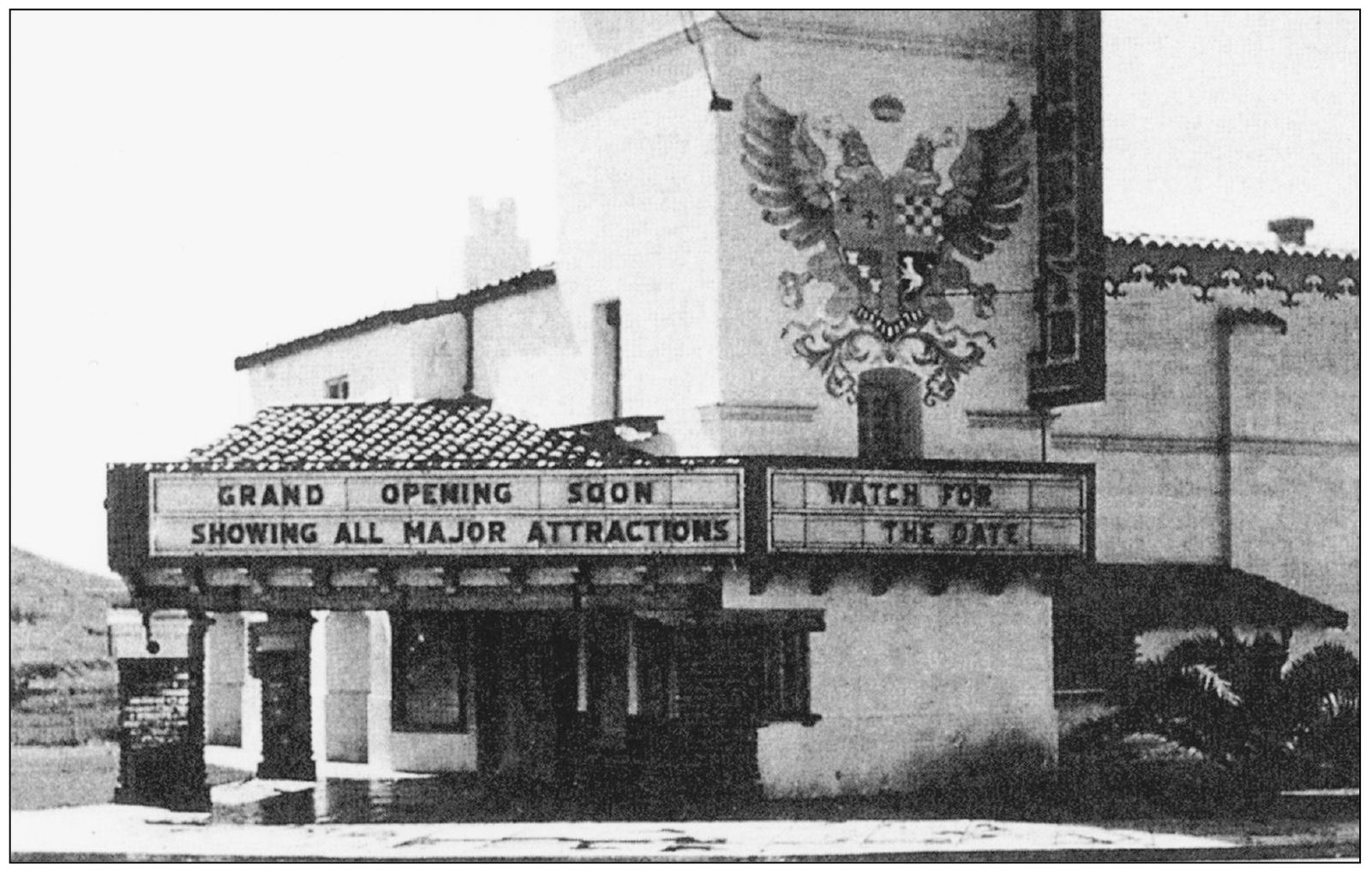
The Miramar Theater opened in 1938. This image of the theater depicts a Spanish-style crest on the theater’s tower. Many local citizens who attended the opening and worked in the theater do not recall the crest ever actually being on the building. This picture may have been altered to be used as a promotional image.
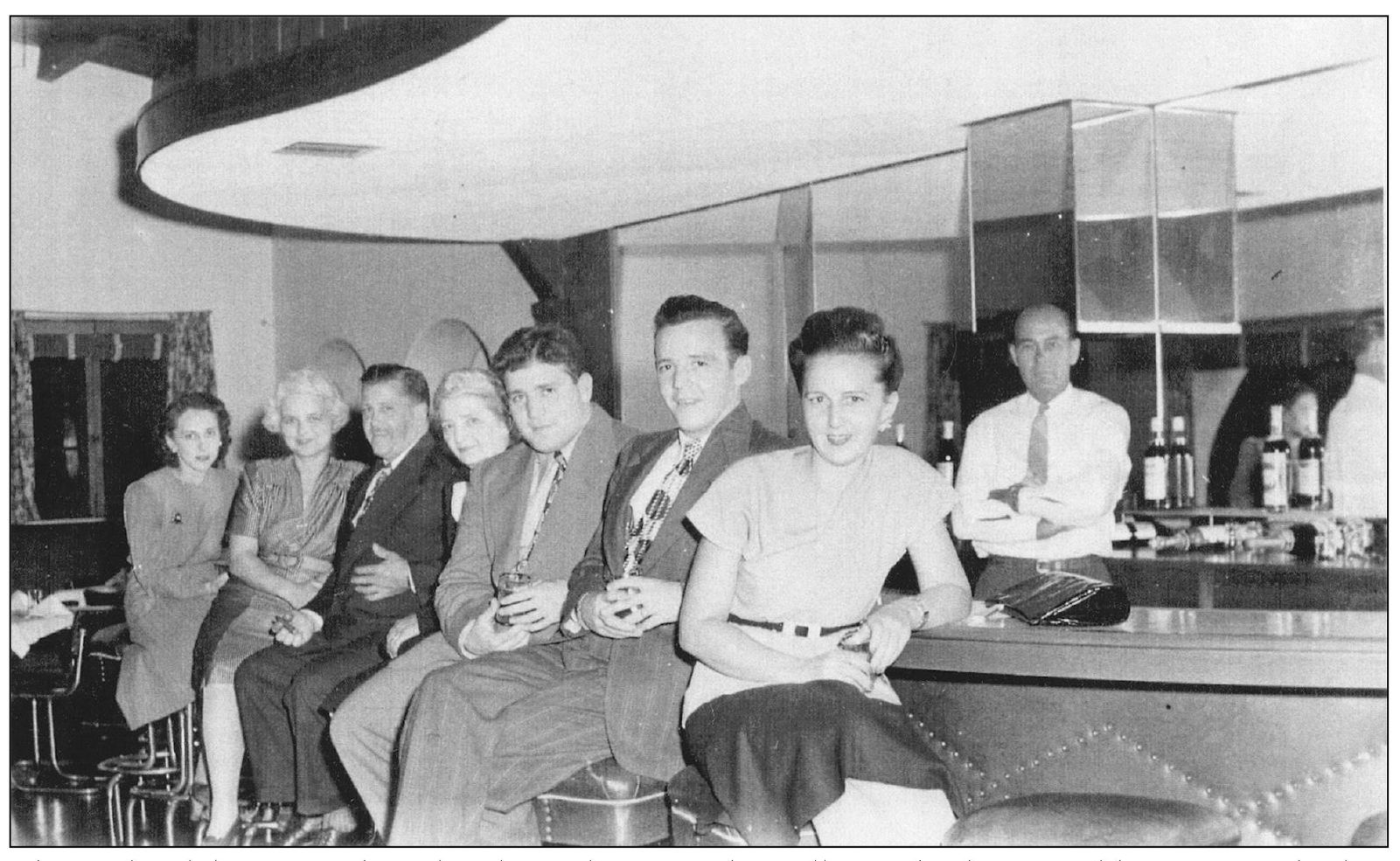
The Golf Club Bar is where local vocalist Dorothy Fuller and others would perform. The bar was located in the first San Clemente Golf Course Clubhouse, erected in 1930 near the corner of Avenida Magdalena and South El Camino Real.
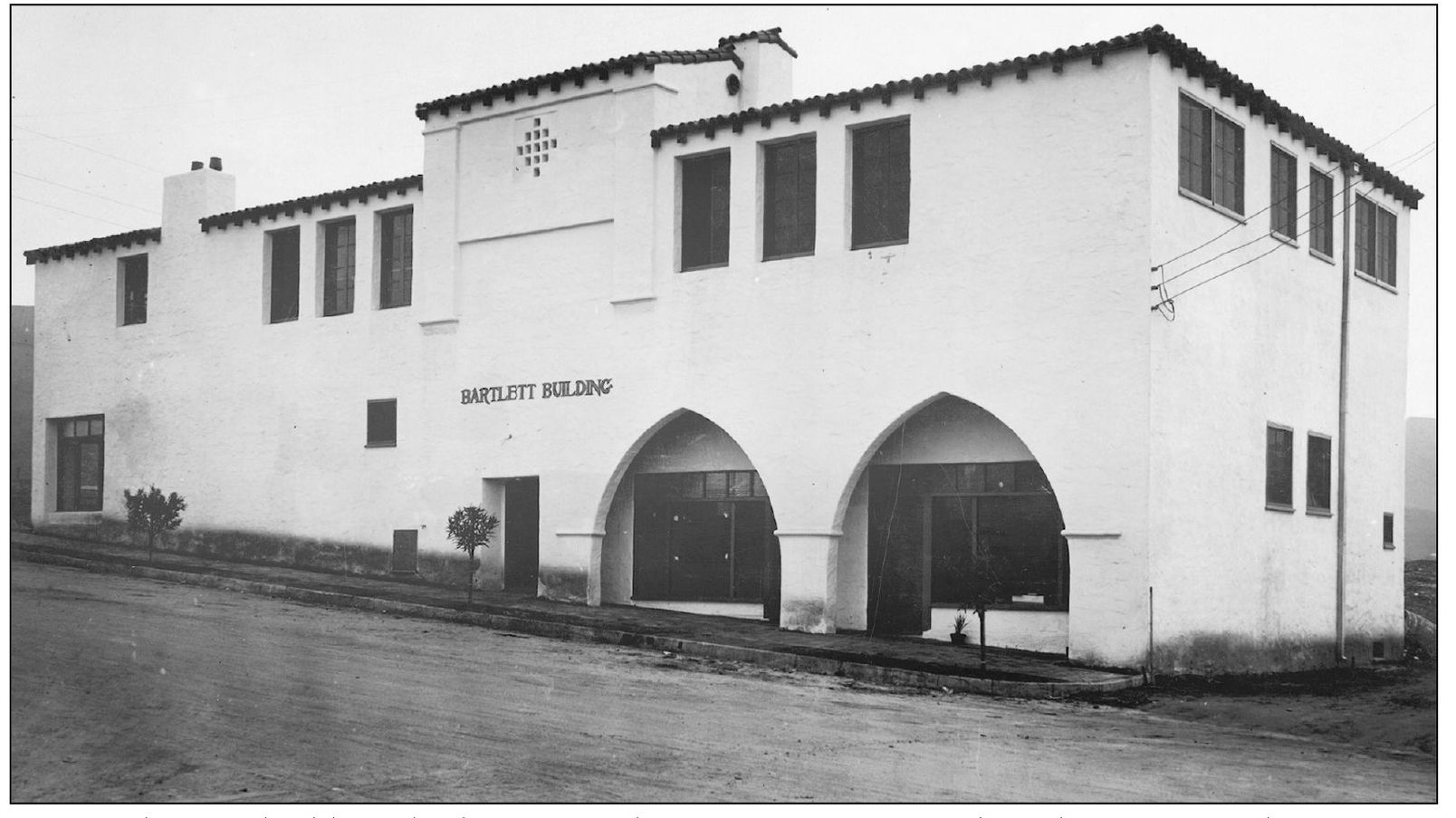
One of the first buildings built in San Clemente, across Avenida Del Mar from Ole Hanson’s Office, was the Bartlett Building, which contained a general store, Carl Romer’s hardware store, a barbershop, pool hall, lunch counter, and the San Clemente Café, owned and furnished by Ole Hanson, including a Florentine gilt mirror. The second floor contained furnished apartments.
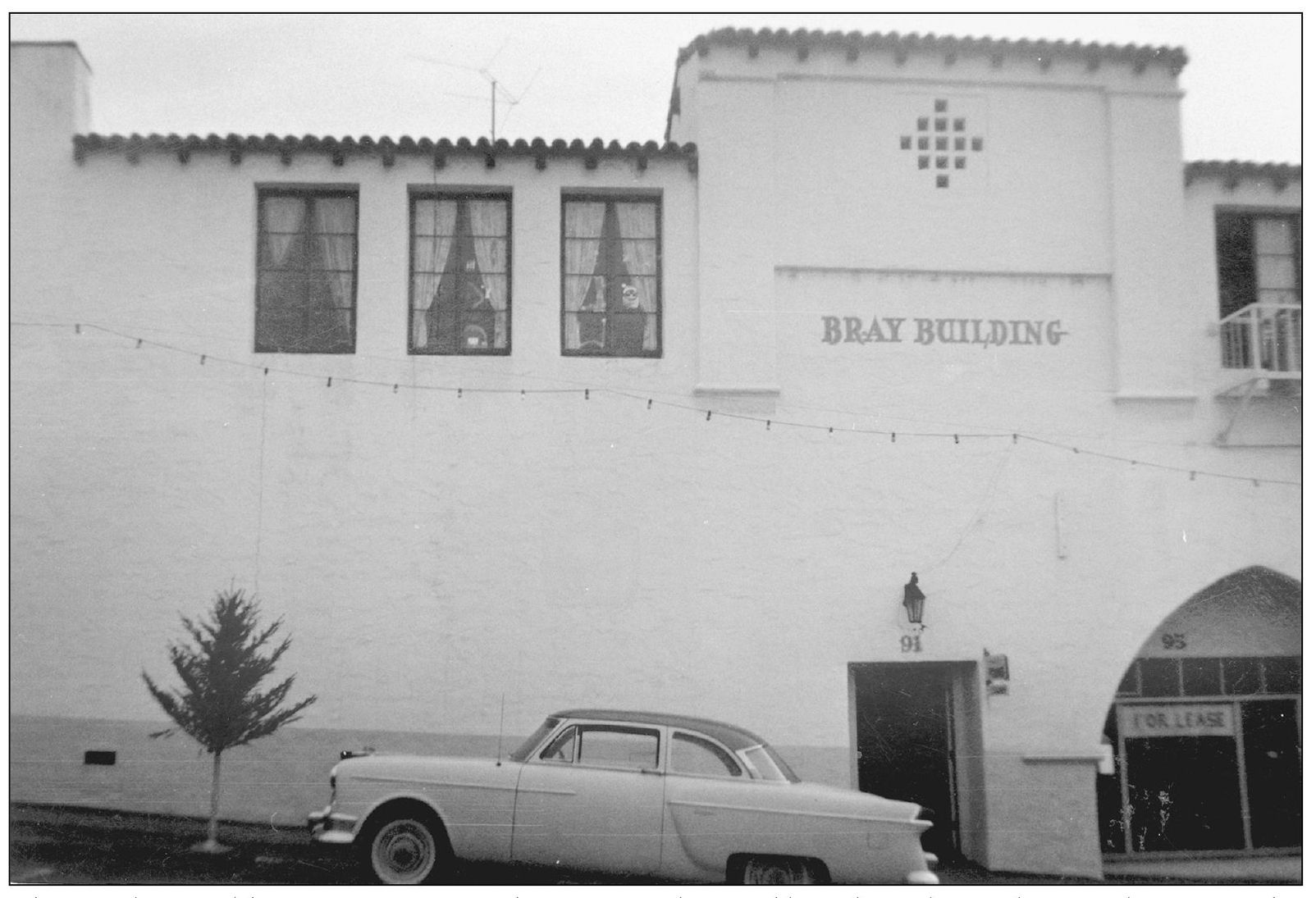
The Bartlett Building was constructed in 1926 and owned by Ed Bartlett. It became known as the Bray Building around the 1950s for a short time during a change in ownership. The building has housed a dental office and newspaper office, including San Clemente’s first paper, the El Heraldo and the present Sun Post News.
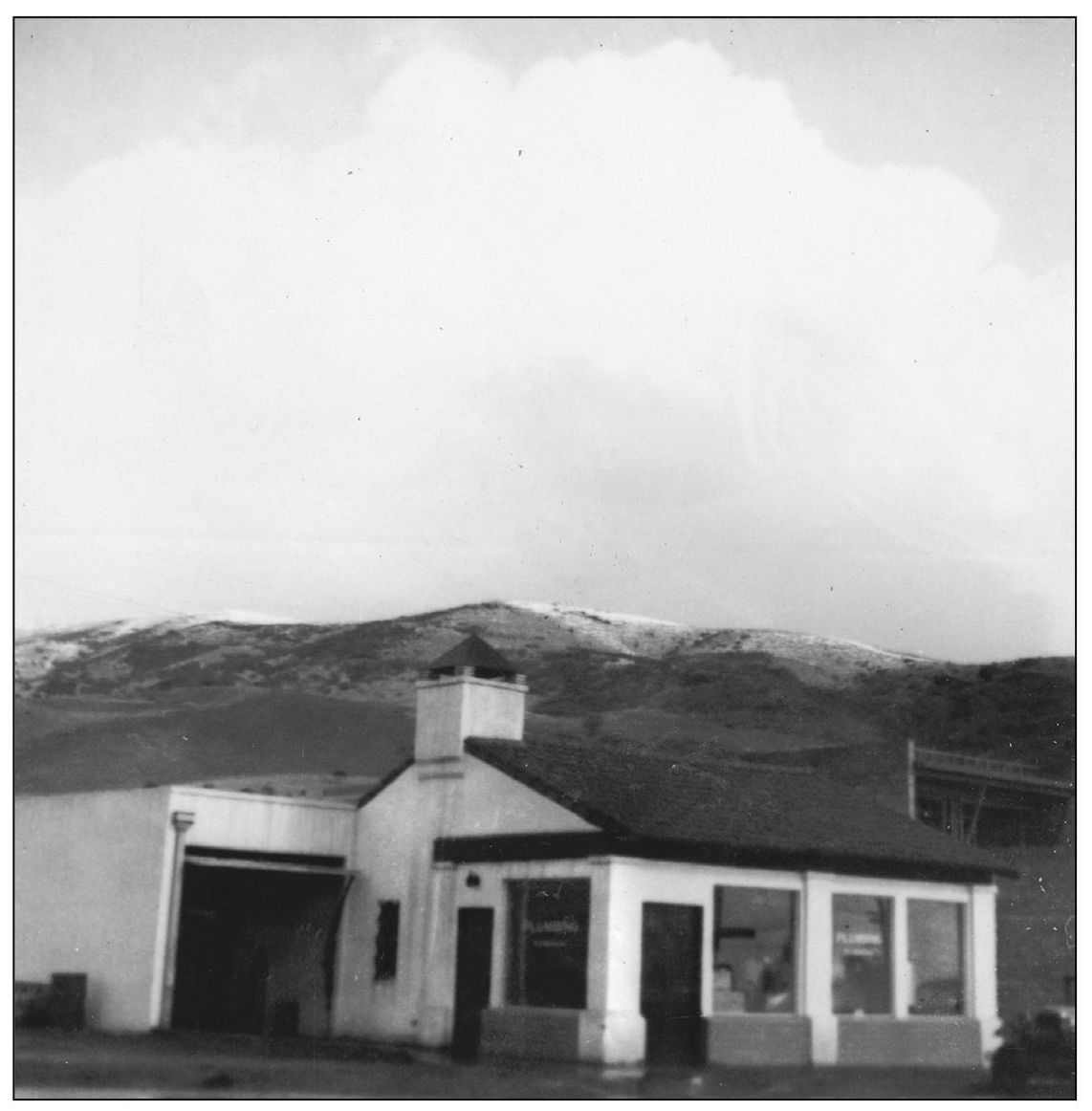
The Madison Plumbing building was located on El Camino Real near Presidio. The mountains in the background date this photograph to January 1949, when it snowed on the hillsides of San Clemente.
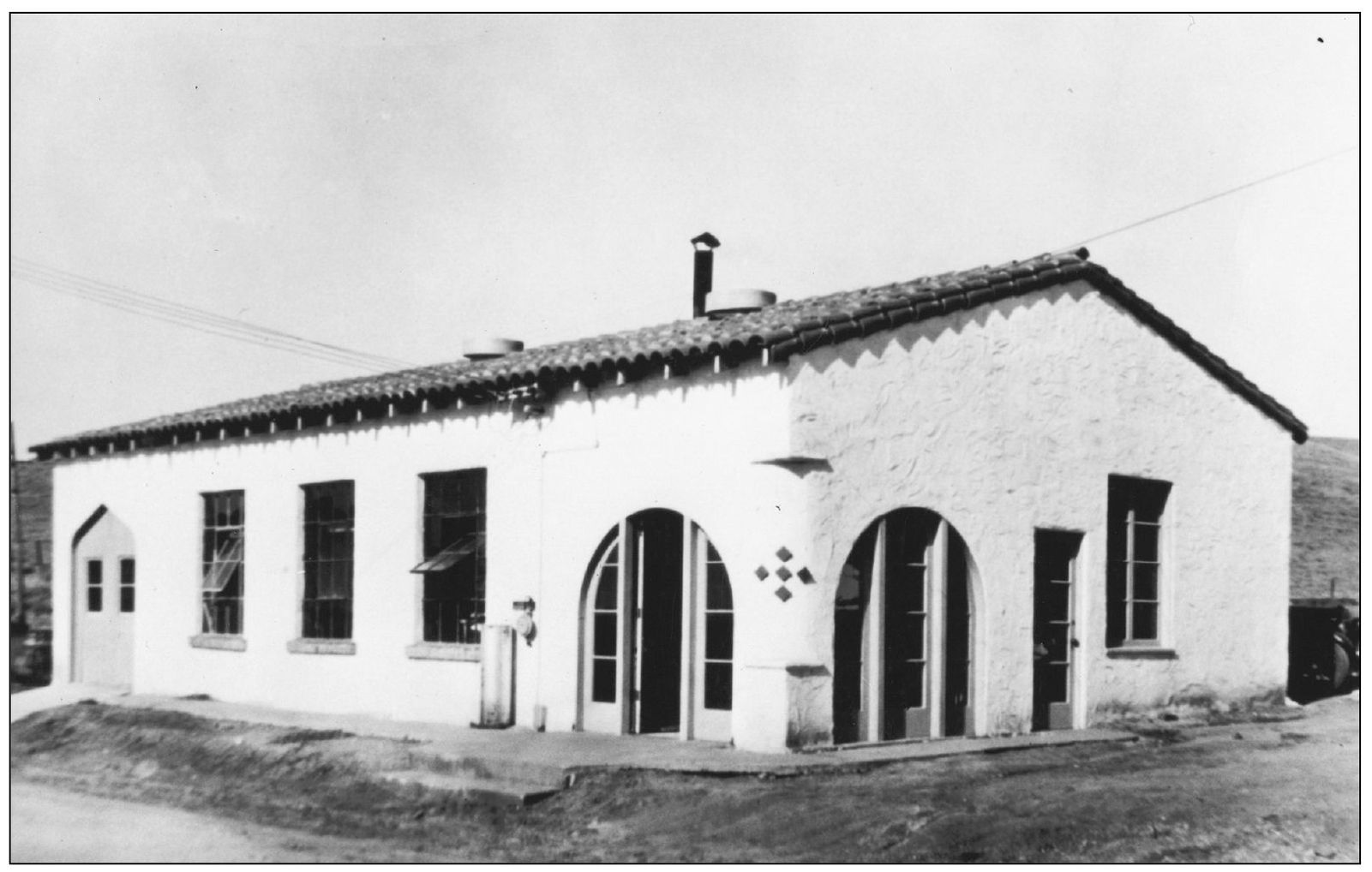
This building on Avenue Pico was where builders and furniture designers created the decorative wrought iron and Spanish Revival furniture needed by the young town. In 1927, San Clemente needed a factory to build furniture for the 300 newly constructed homes. Ole Hanson asked the furniture designers and craftsmen to use the upstairs of his office until he could build them a factory.
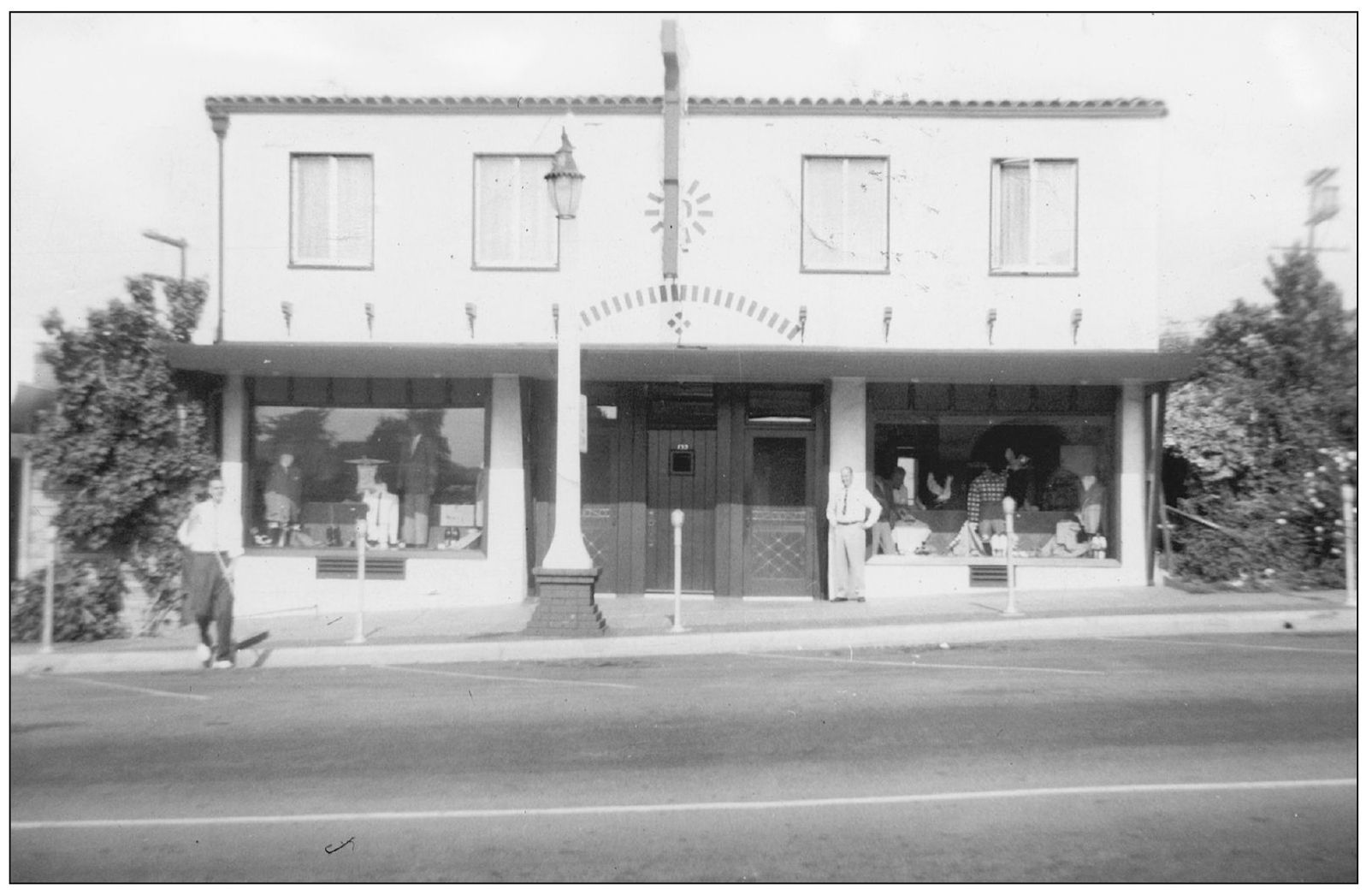
The Coe Building was also known as Lindy’s, a men’s shop, and later became home to the Heritage of San Clemente Foundation. Hanson’s dream produced over 500 Spanish buildings until the 1930s and the Great Depression led to the abandonment of the “Spanish-only” building restrictions. Over 200 original “Spanish” buildings remain to this day, including this one.

Divel’s Mortuary opened on El Camino Real. At that time, it was considered the “end of town.” In 1927, when Roy Divel asked Ole Hanson if he could open a funeral home, Ole Hanson said, “If you have enough guts to open a business like that in a town of 300 people, I’ll give you the building permit.” Roy Divel also operated the only ambulance from Oceanside to Long Beach. Roy and Patti Divel both were very active in the community. (Courtesy of Lois Divel.)
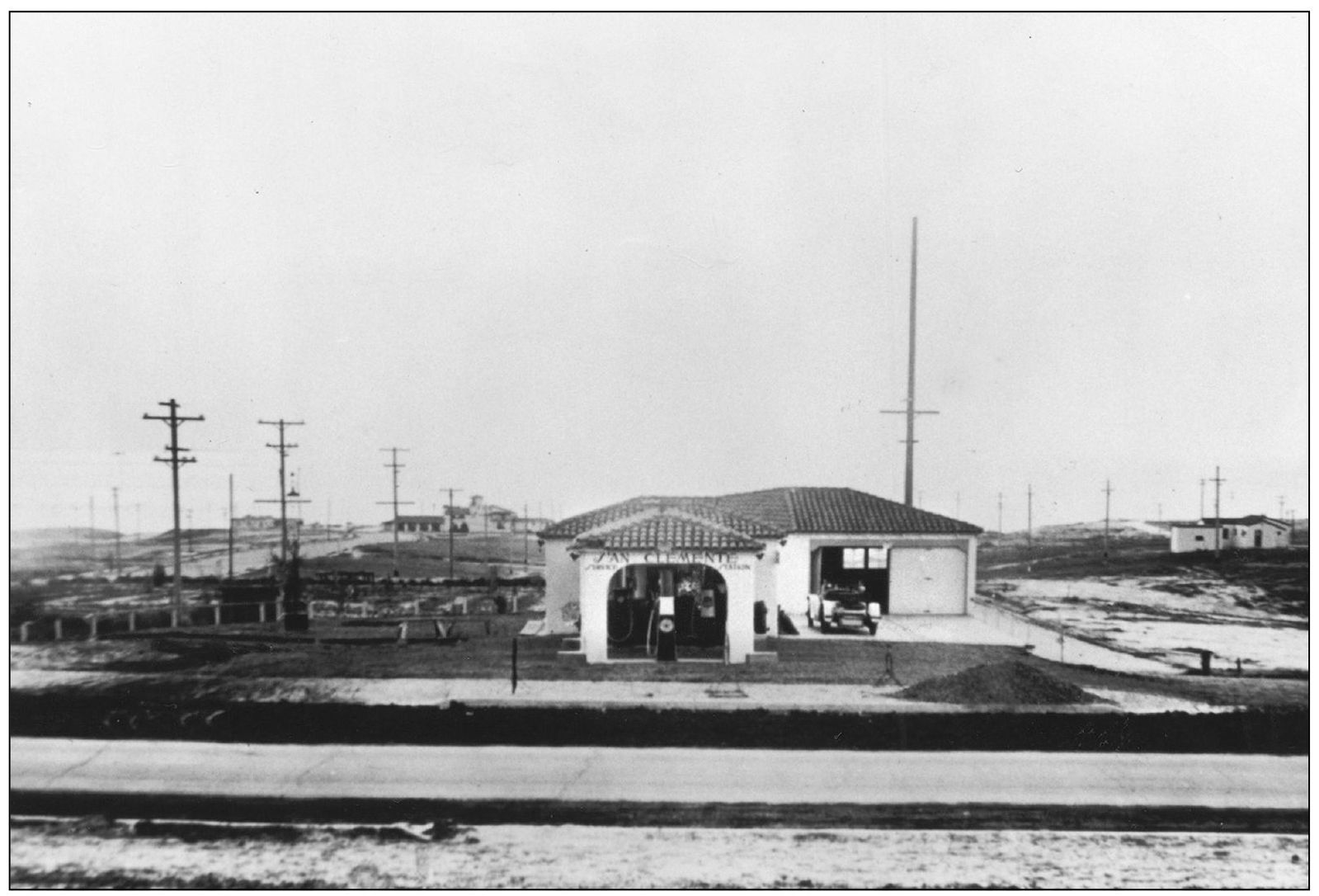
The first gas station was built simultaneously with Ole Hanson’s Office in 1926. The gas station was needed to fuel the equipment used to construct the new city and to supply prospective home buyers with fuel to drive between San Clemente and Los Angeles or San Diego.
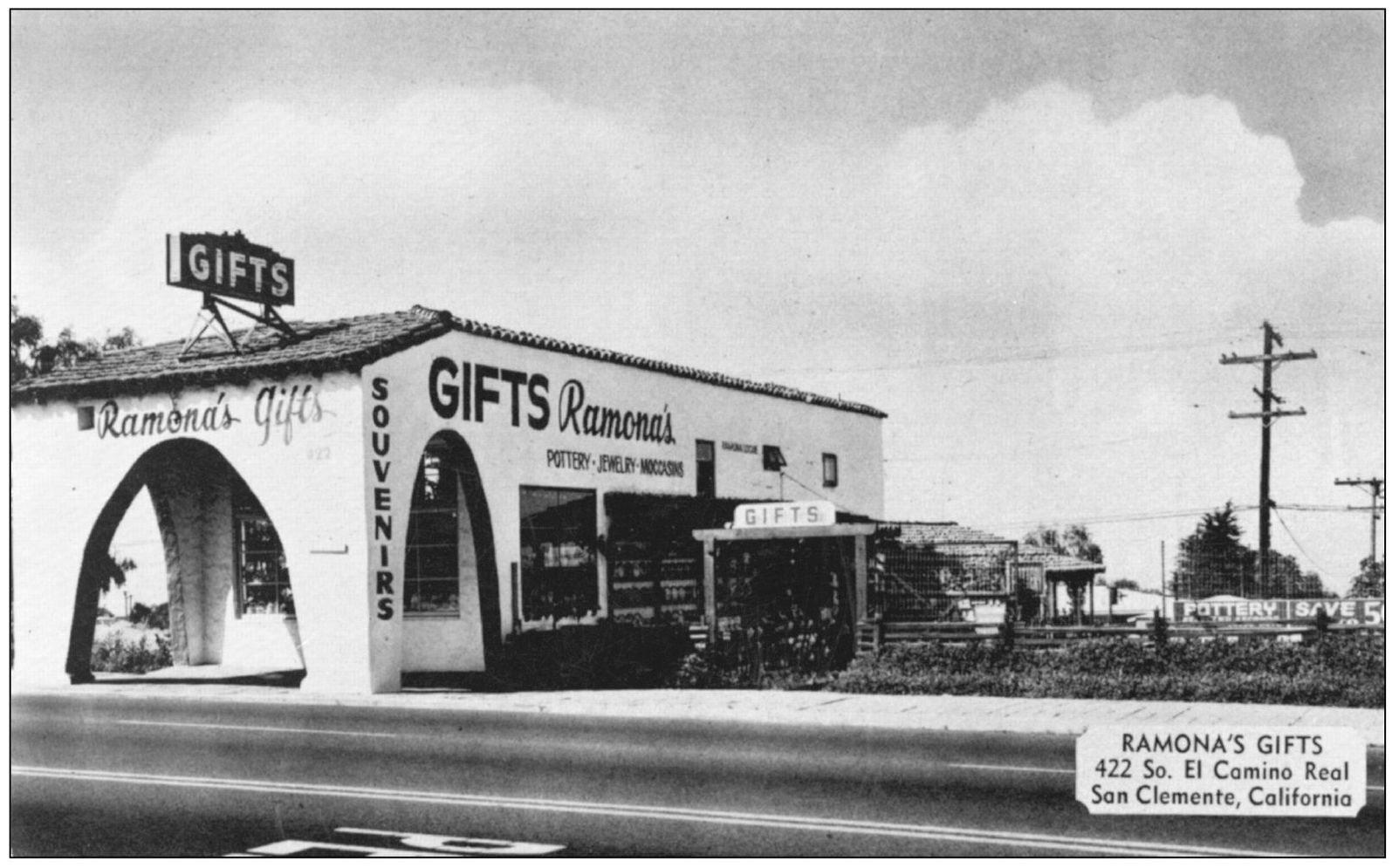
This building, located at 422 South El Camino Real, has since been demolished. It was called Gifts Unique. When the owner died, his wife continued the business and changed the name to Ramona’s Gifts.
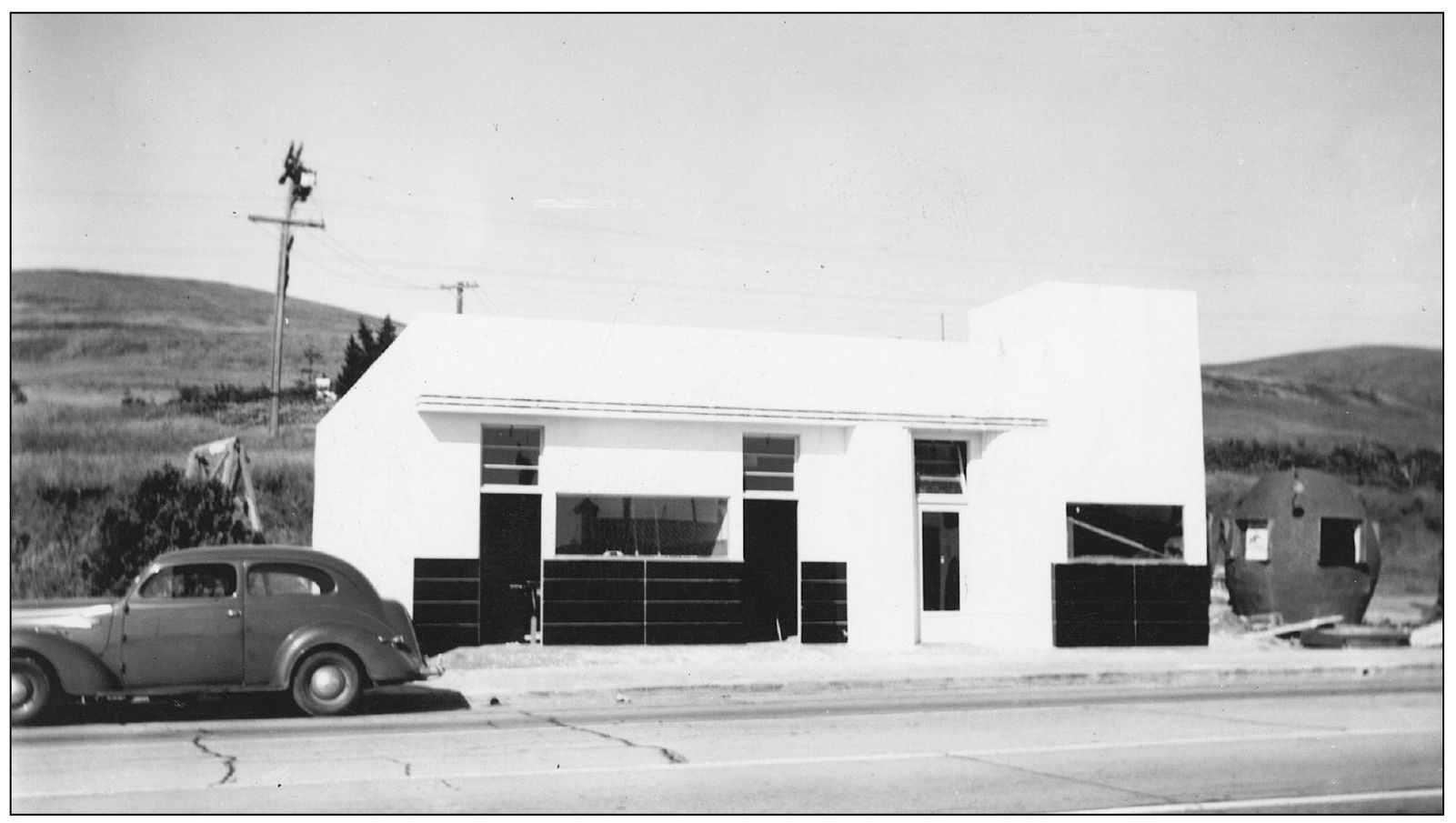
This building operated as a number of restaurants over the years, located at 211 North El Camino Real. The building to the right is a round orange juice stand, built around 1950. From the 1950s through the 1970s, the areas north and south of town were predominately orange groves. When driving through Orange County, one could actually smell them for miles.
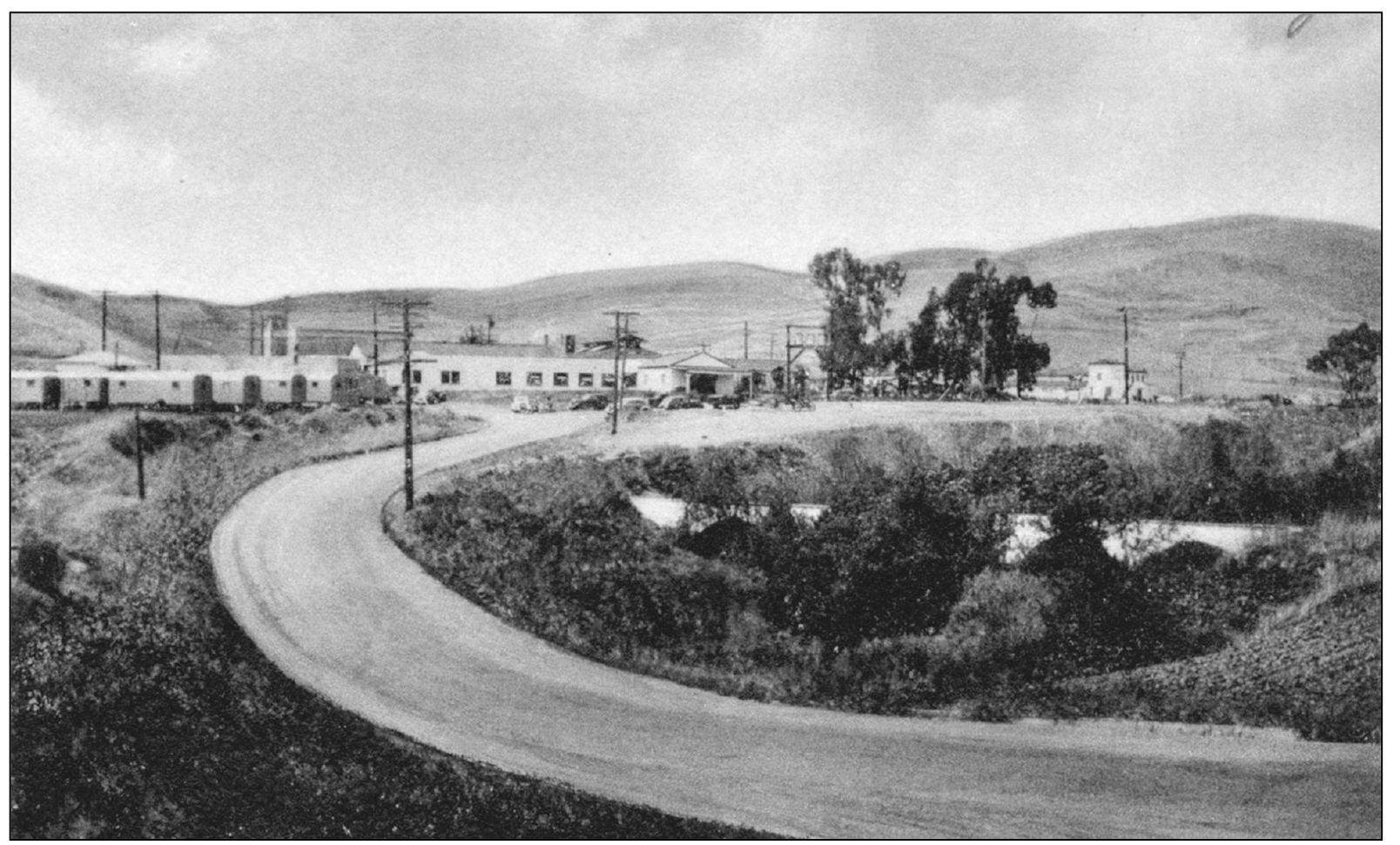
Reeves Rubber Factory was one of the first large industries to open in San Clemente. Lois Divel remembers sanding and buffing airplane parts at Reeves Rubber. Dave Tansey remembers walking to Reeves Rubber Factory and working the swing shift as a press man, making swim fins and parts for P38 fighter planes.
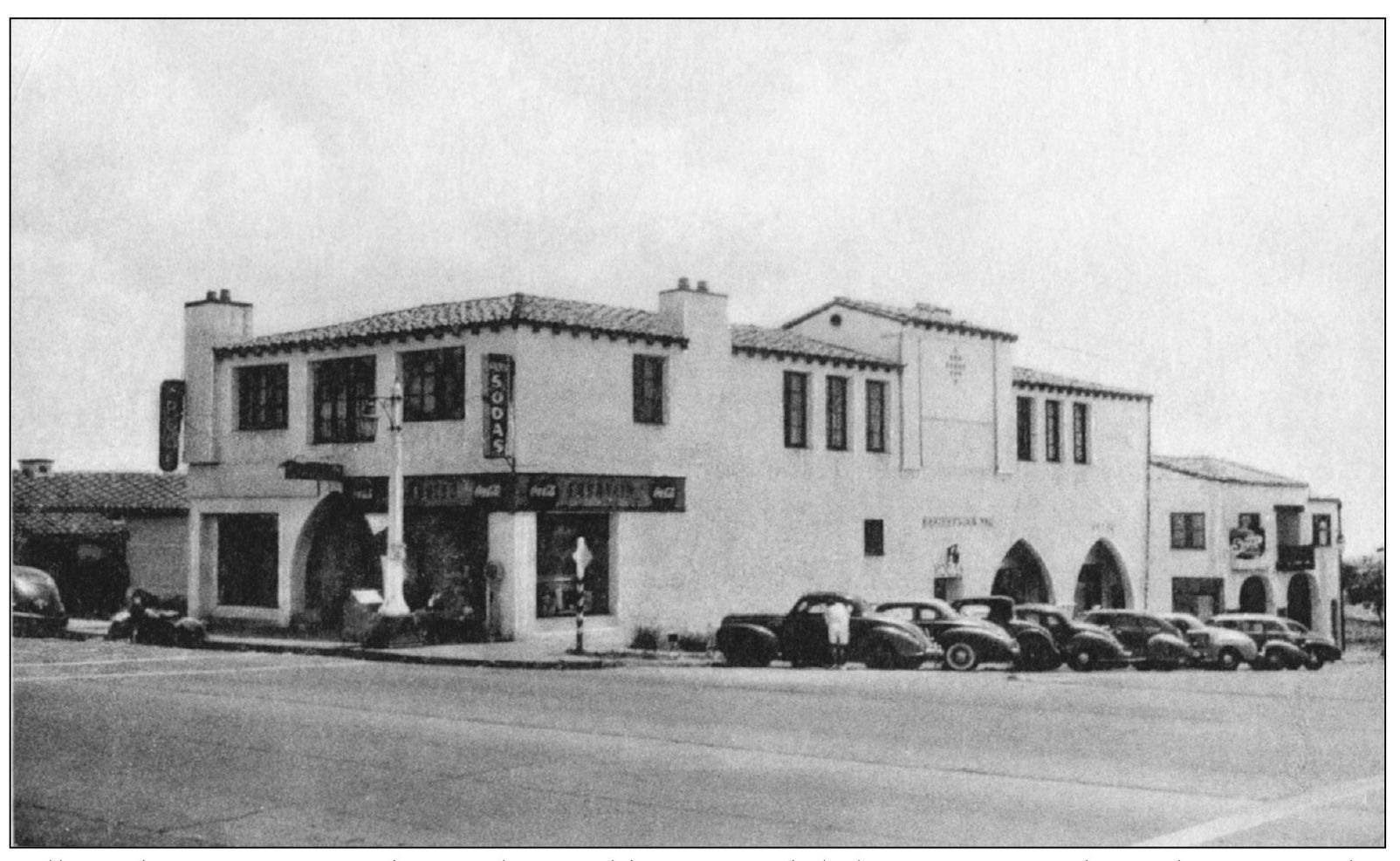
Fuller’s Pharmacy was in the Bartlett Building for a while before moving down the street. Also located in the Bartlett Building was El Heraldo de San Clemente, San Clemente’s first newspaper, begun by Ole Hanson.
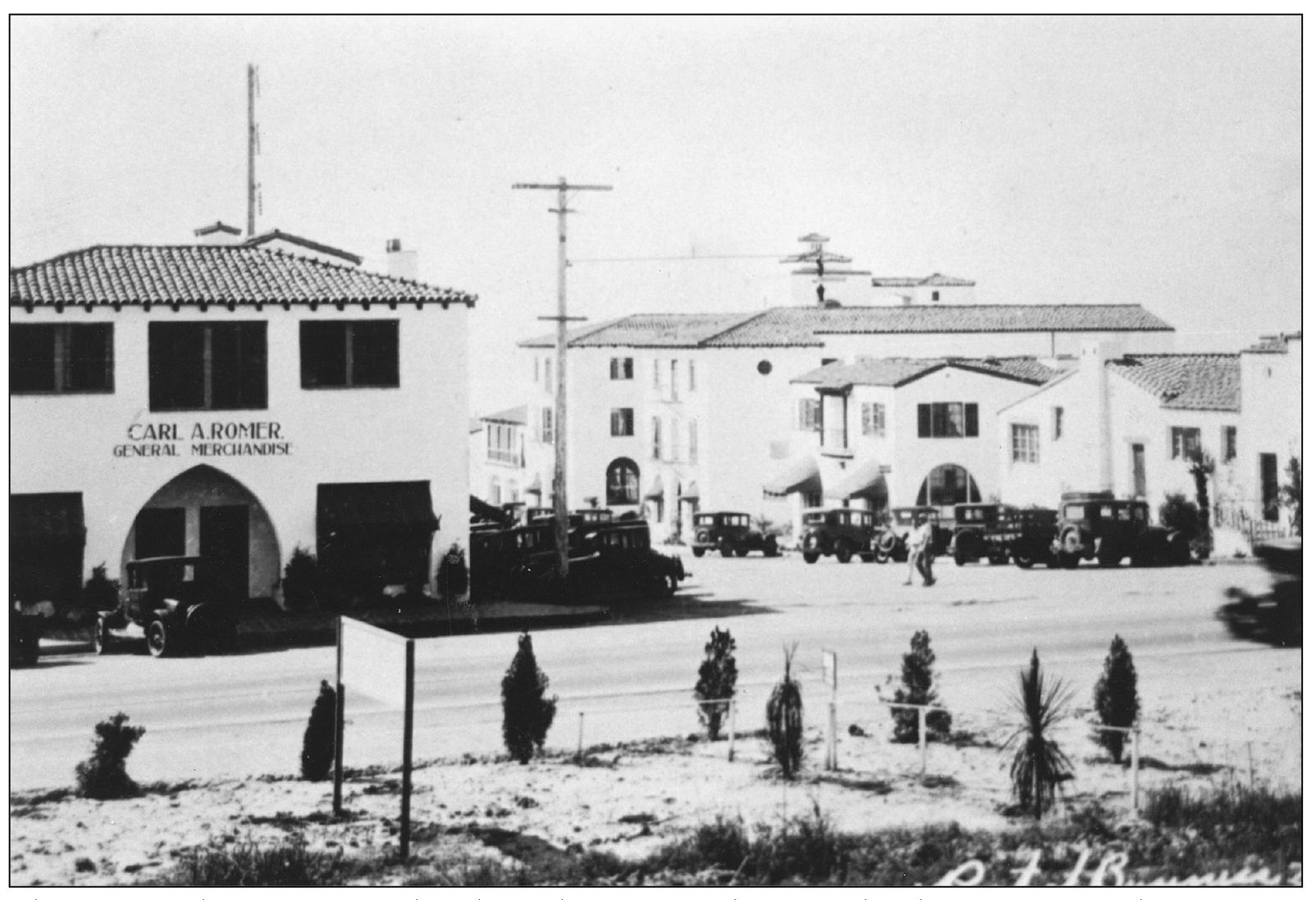
The top of Del Mar is pictured in the early 1930s. Carl Romer’s hardware store was the first store to occupy this site. It later became a market and a pharmacy.
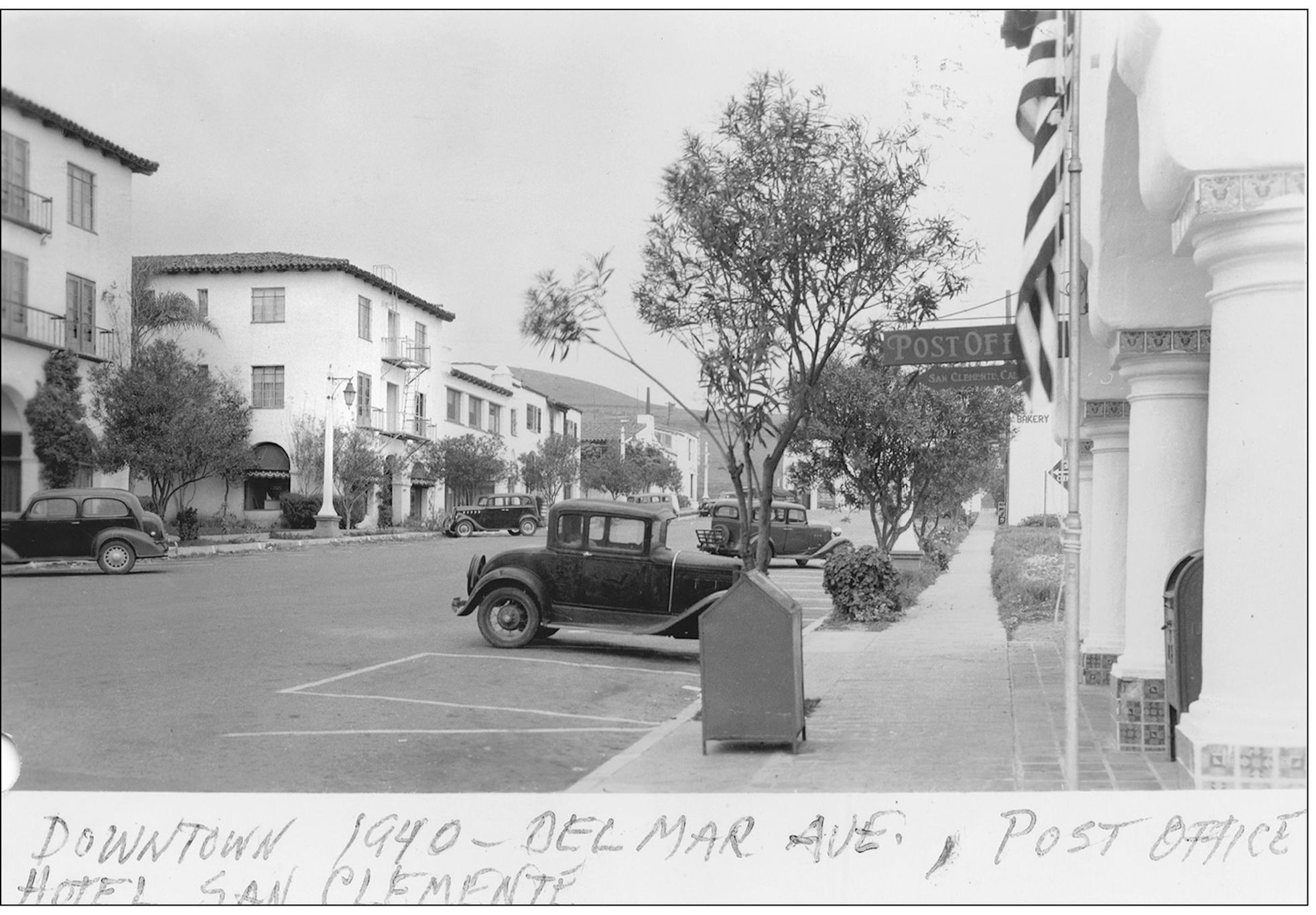
Looking up Del Mar in 1940, the Hotel San Clemente is visible on the left and the post office stands to the right. With a vision of building an entire village “in the fashion of Old Spain,” Hanson wrote, “We believe beauty to be an asset as well as gold or silver.... We may build at San Clemente but one building, but we will preserve for all time these hills from the heterogeneous mixture of terrible structures which so often destroy the beauty of our cities.”
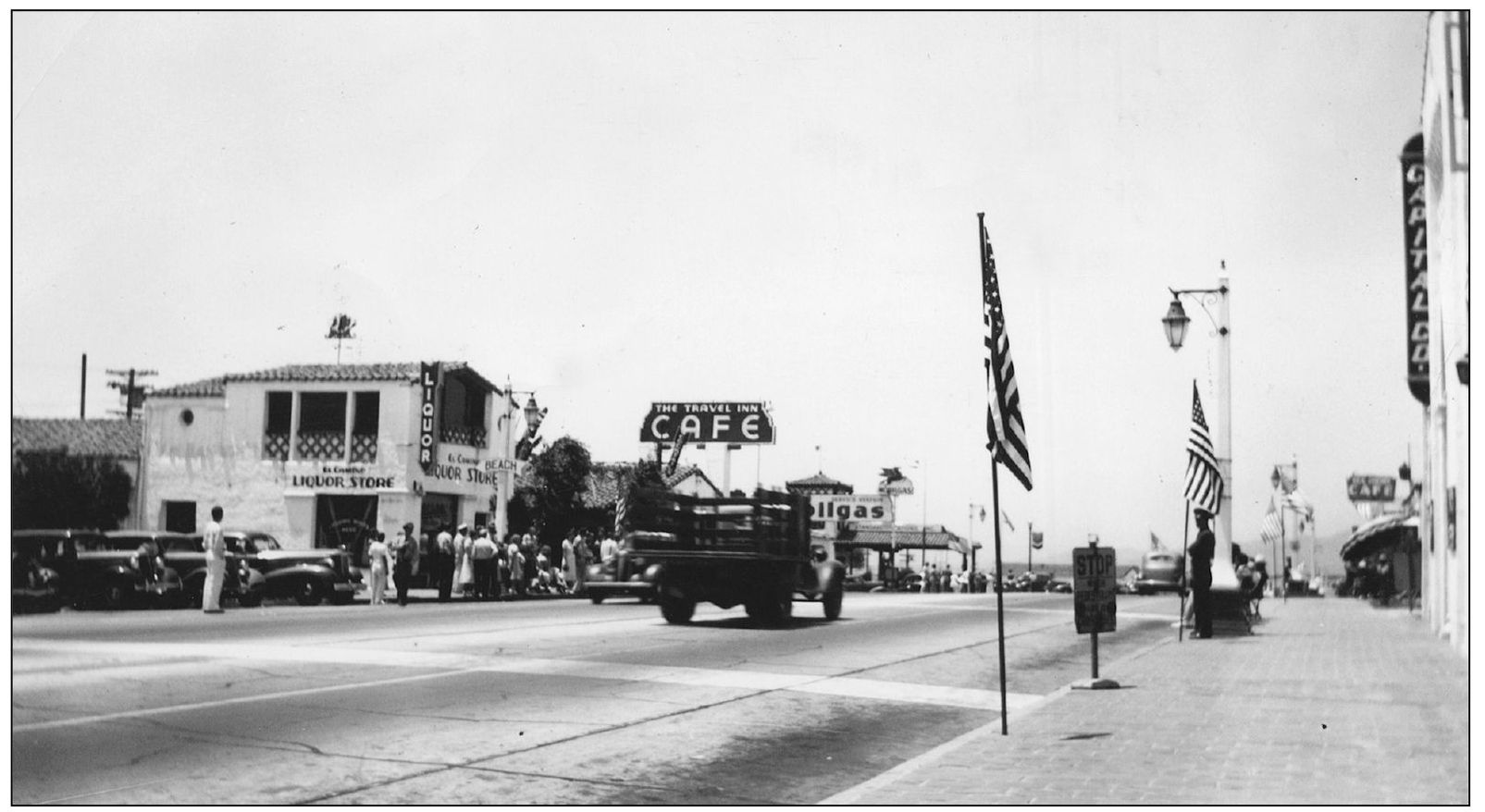
This is where El Camino Real intersects the end of Avenida Del Mar. The top of the hill is fondly called the Top of Del Mar. The Marines are present in this photograph, as people are getting ready for President Roosevelt’s motorcade to Camp Pendleton for the dedication. (Courtesy of Lois Divel.)
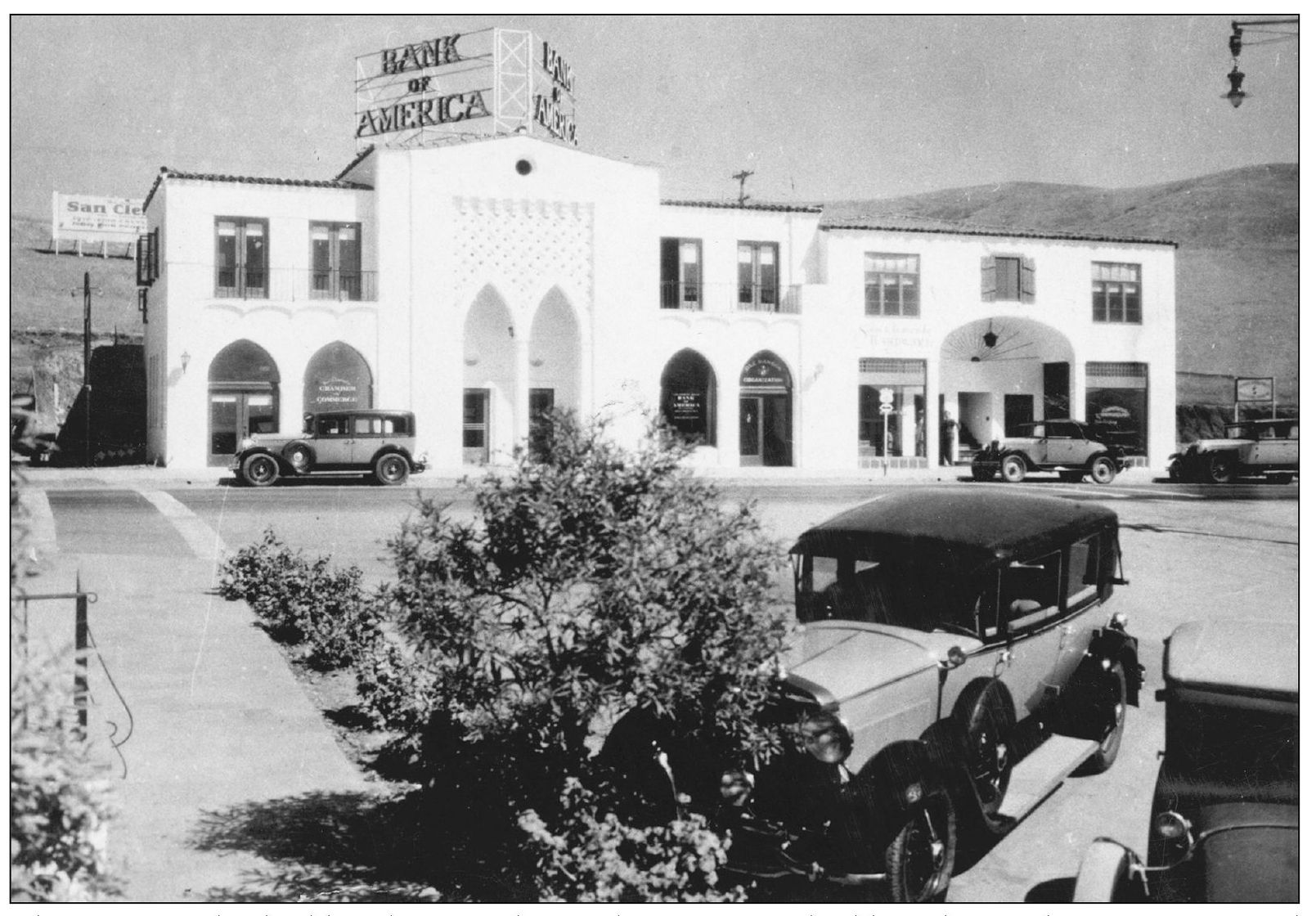
The Oscar Easley building became the Bank of America building during the Depression and remained so through the 1960s. The building fits the Spanish Revival architectural theme required by the Ole Hanson Organization. However, this building accentuates Moorish architectural elements more than any other building in town.
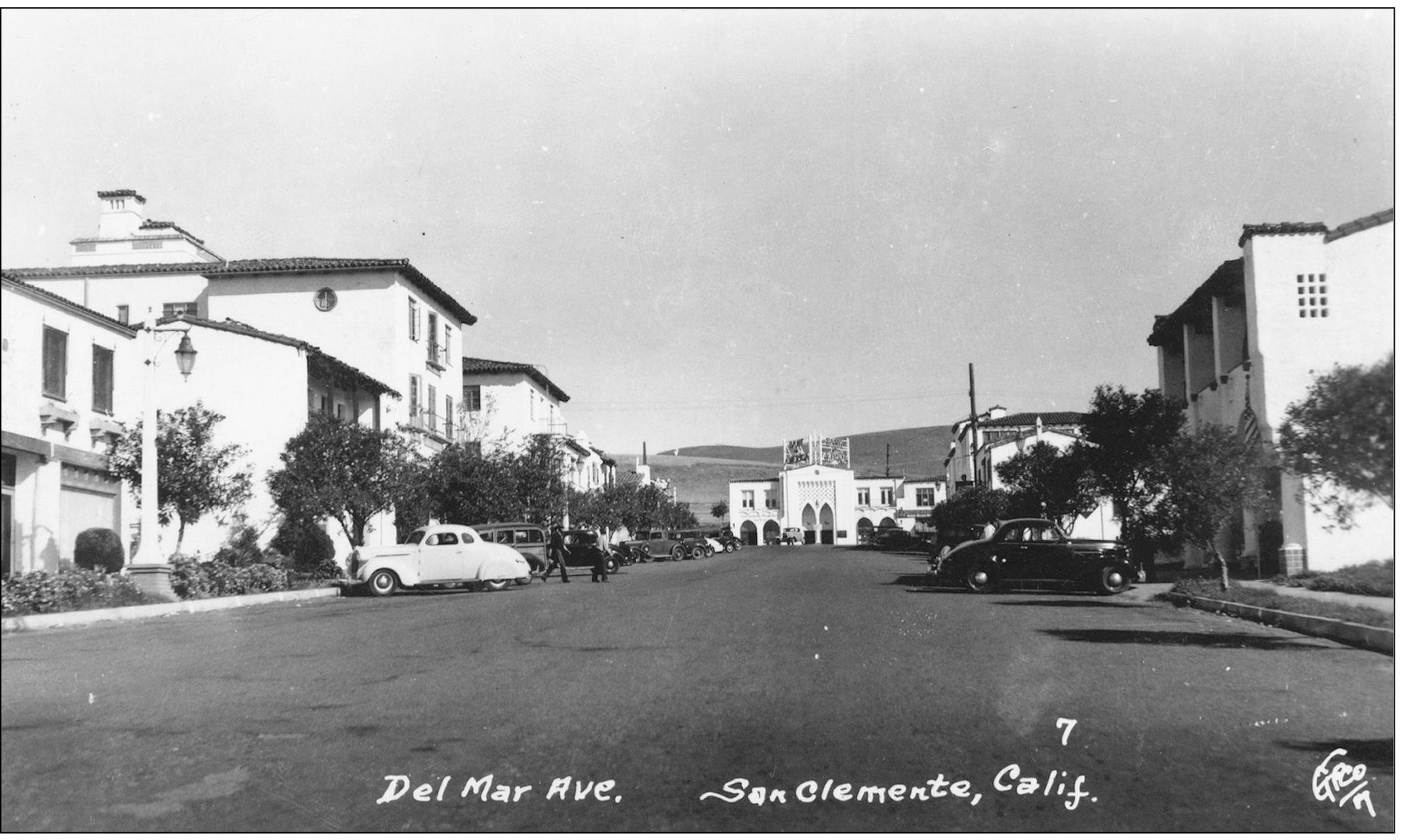
This shows the view looking up to the top of Del Mar at the Oscar Easley Building. The city’s first street builder and contractor, Oscar F. Easley, had surveyed the location and concluded that the city plan would probably fail, but he decided to have faith and “ride through with the boss,” founder Ole Hanson. Hanson wanted to have “a village in the fashion of Old Spain,” rather than one of California Mission or Mexican village style. Easley went on to build a number of buildings for himself. One can still see Easley’s handiwork on curbs all over the downtown area. Just look for an imprint on the curb that says, “OF Easley Contractor.”

M This is a view of El Camino Real. The Oscar Easley building, then the Bank of America, stands on the right, with a real estate office next to it. On the left side of the street, the Bartlett Building contains furnished rooms for rent and a café with pool tables. Ole Hanson’s Office is seen on the corner.
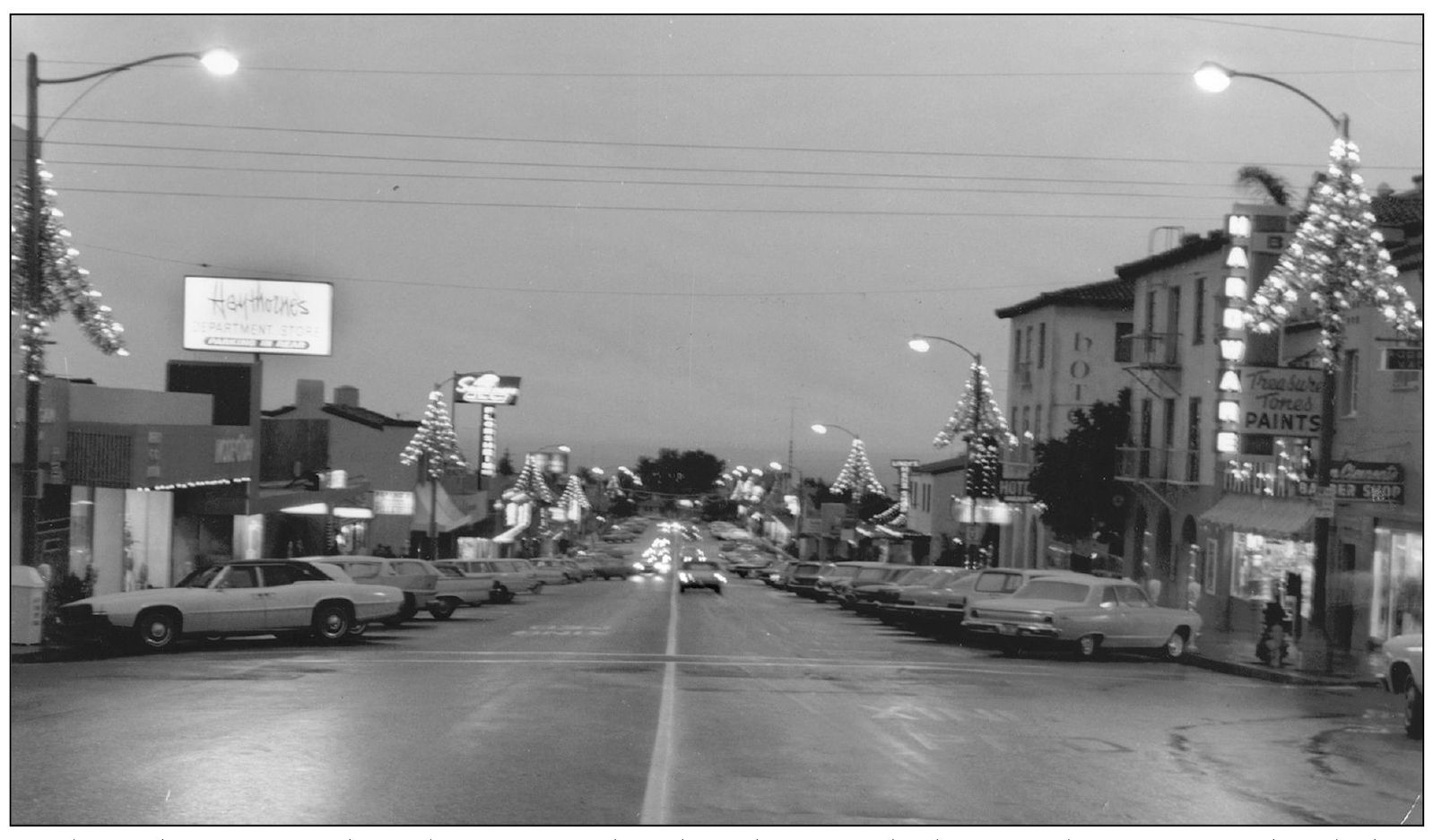
Looking down Avenida Del Mar at night, this photograph shows Del Mar covered in lights. Just about every shop owner decorated with lights during the holidays, and the city decorated lampposts and trees, a tradition that exists today.
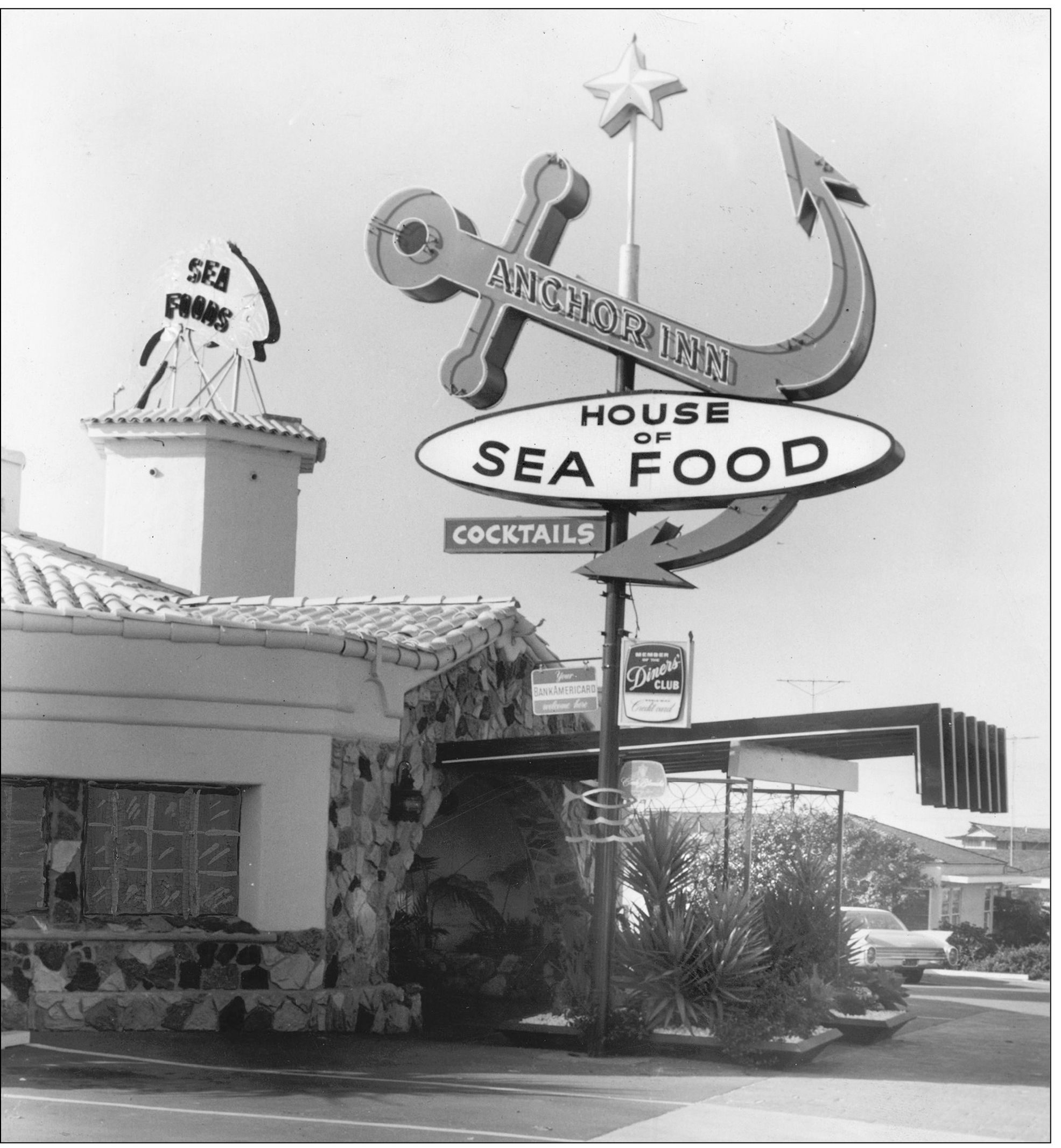
The Aquarium Café was one of a kind during its day. Built into the walls were huge saltwater tanks full of sealife. Fresh ocean water was pumped into them daily in this seafood restaurant. The Aquarium Café opened just as the Depression hit. The owner, Mr. Servus, was so distraught that he hung himself in the back bedroom; however, his wife, Emma, was determined to succeed, and she continued the restaurant successfully. It later became the Anchor Inn and then several other restaurants.
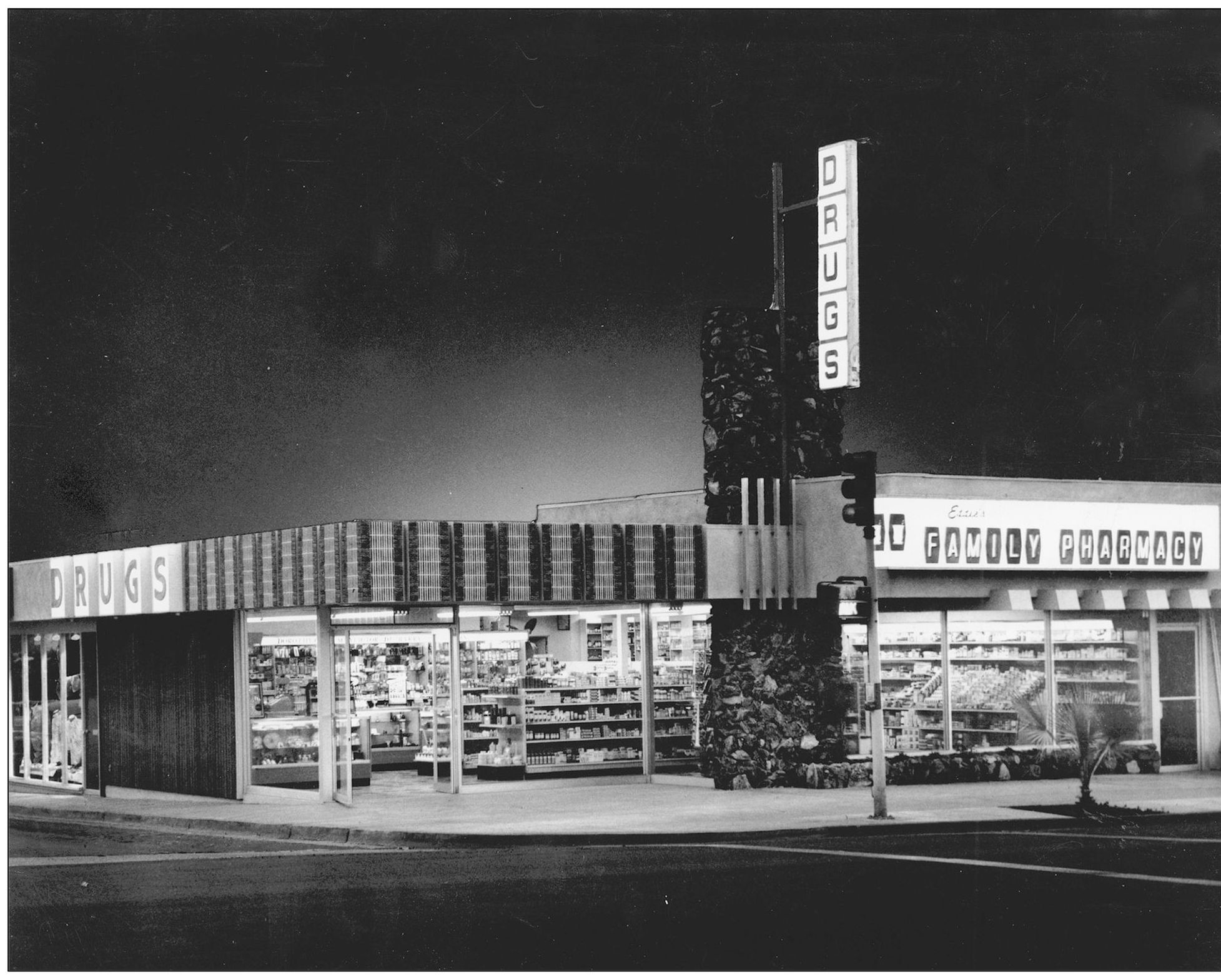
The 1960s brought about new architecture. The building requirements for Spanish-tiled roofs were removed in the early 1940s, giving rise to modern architecture with flat roof tops, streamlined and angled architectural elements, and plenty of windows. Since the 1990s, downtown San Clemente’s devotion to Ole Hanson’s Spanish Colonial Revival style has returned by virtue of an Architectural Overlay District.
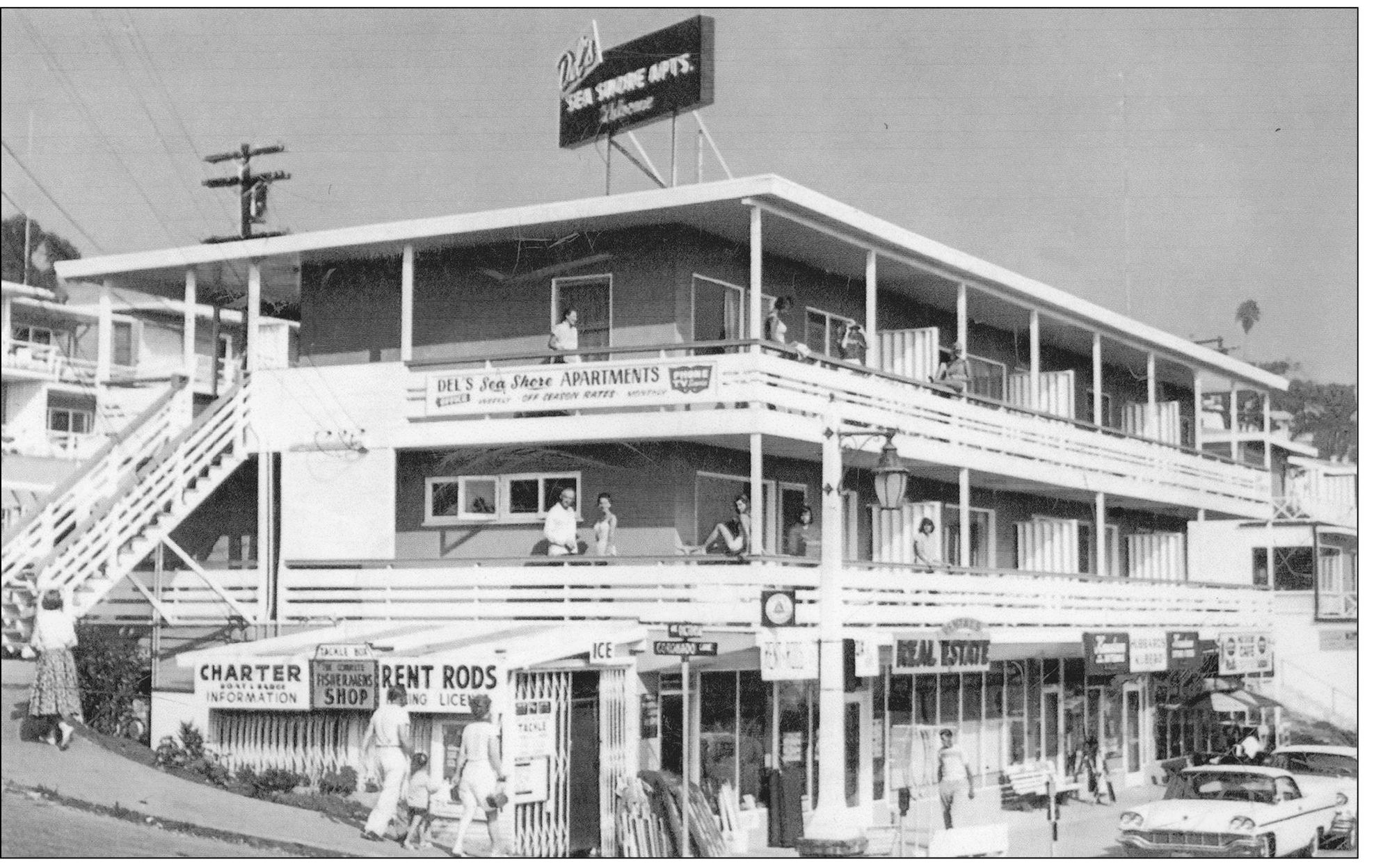
These are the 1960s Del’s Sea Shore Apartments in the Pier Bowl on Avenue Victoria. Charter fishing boats could be rented for the day, or one could spend the day on the beach. Dave Tansey recalls for the 75th Anniversary of San Clemente Life Guards, “Don Divel kept folks out of trouble under the pier. It was probably during 1944 or 1945 when Marv Crummer was captain of the guards. Opie (Tommy Wert) was the longtime guard. The guards on regular duty during that era were Hal Sachs, Jerry Martin, Terry DeWolfe, and me. [In] those days, we also guarded San Clemente State Park, Cottons Point, Doheny State Park, and the old train station at the north end of town.”